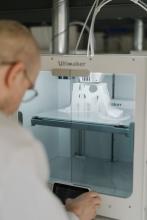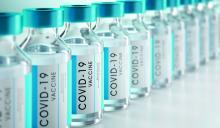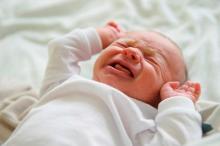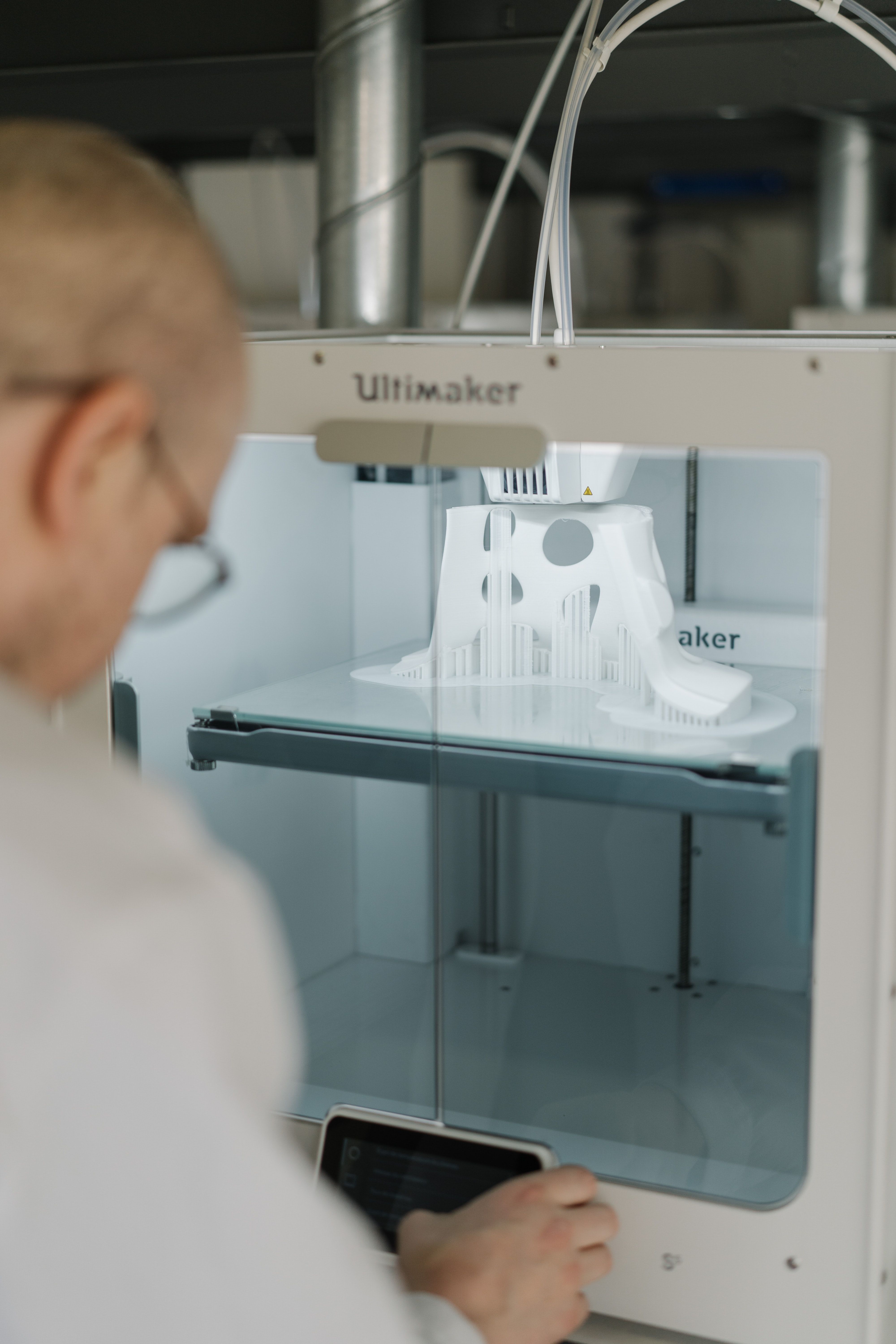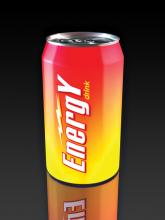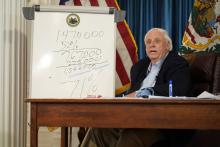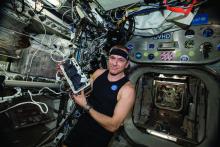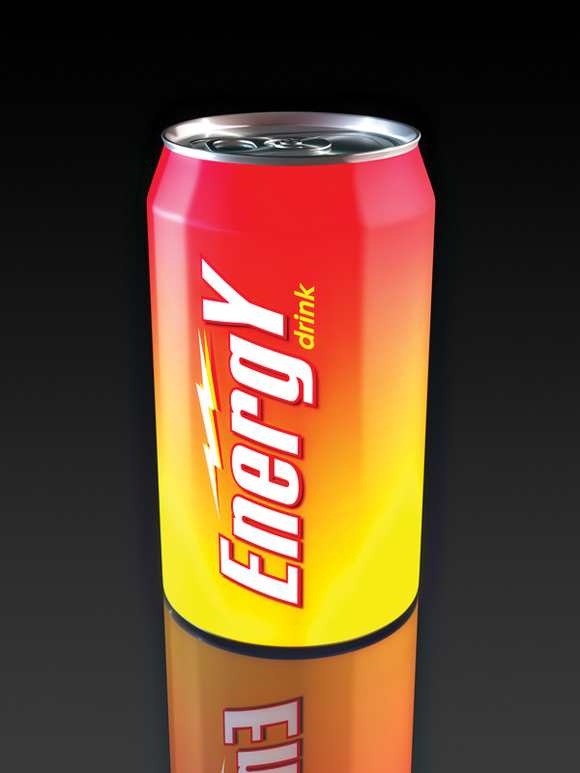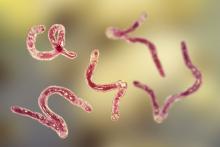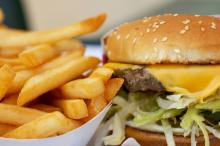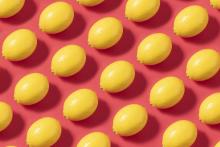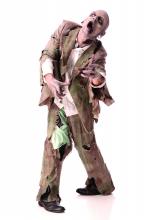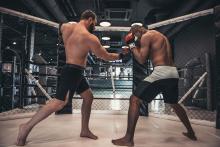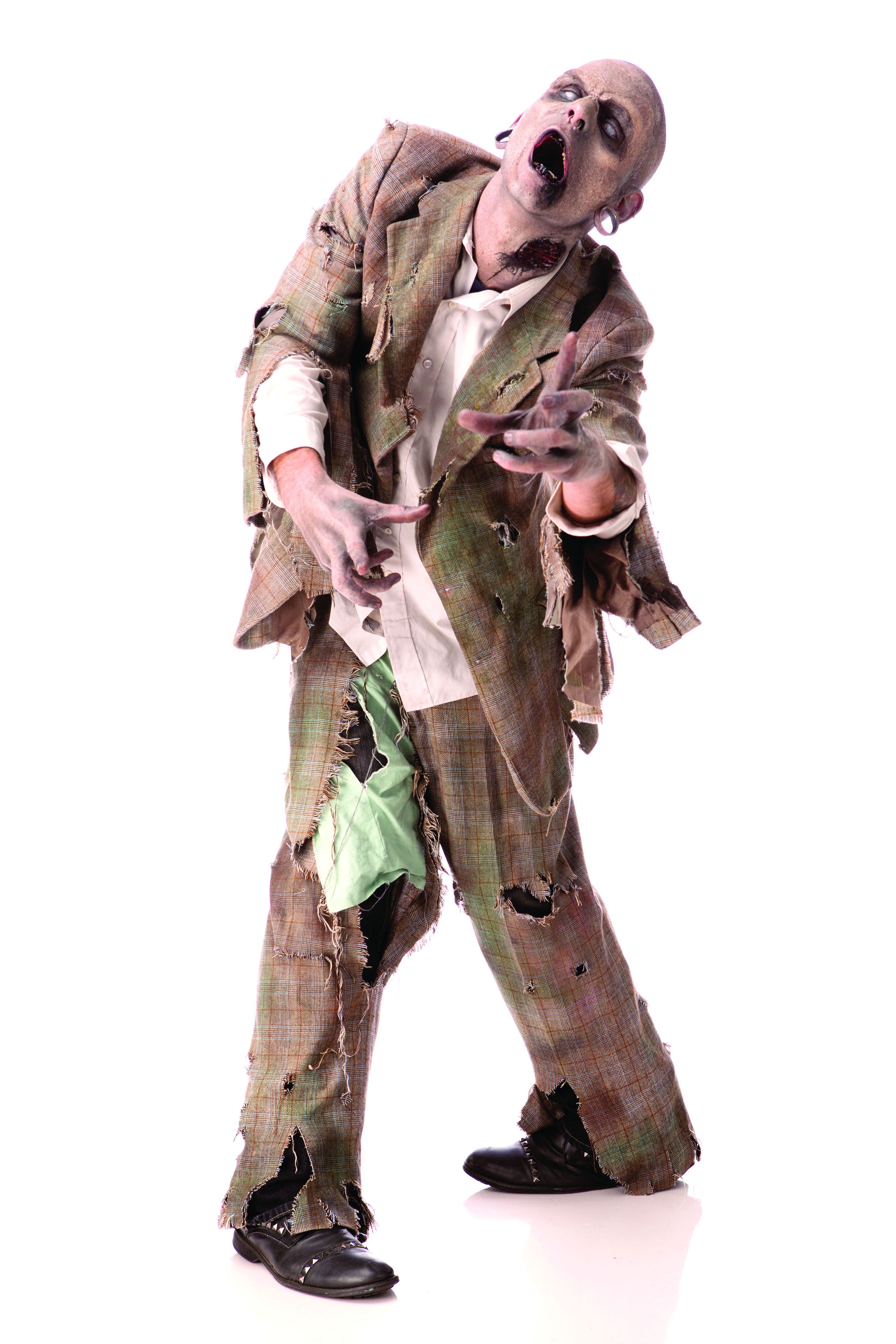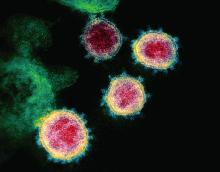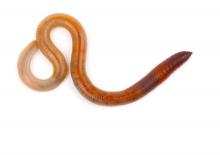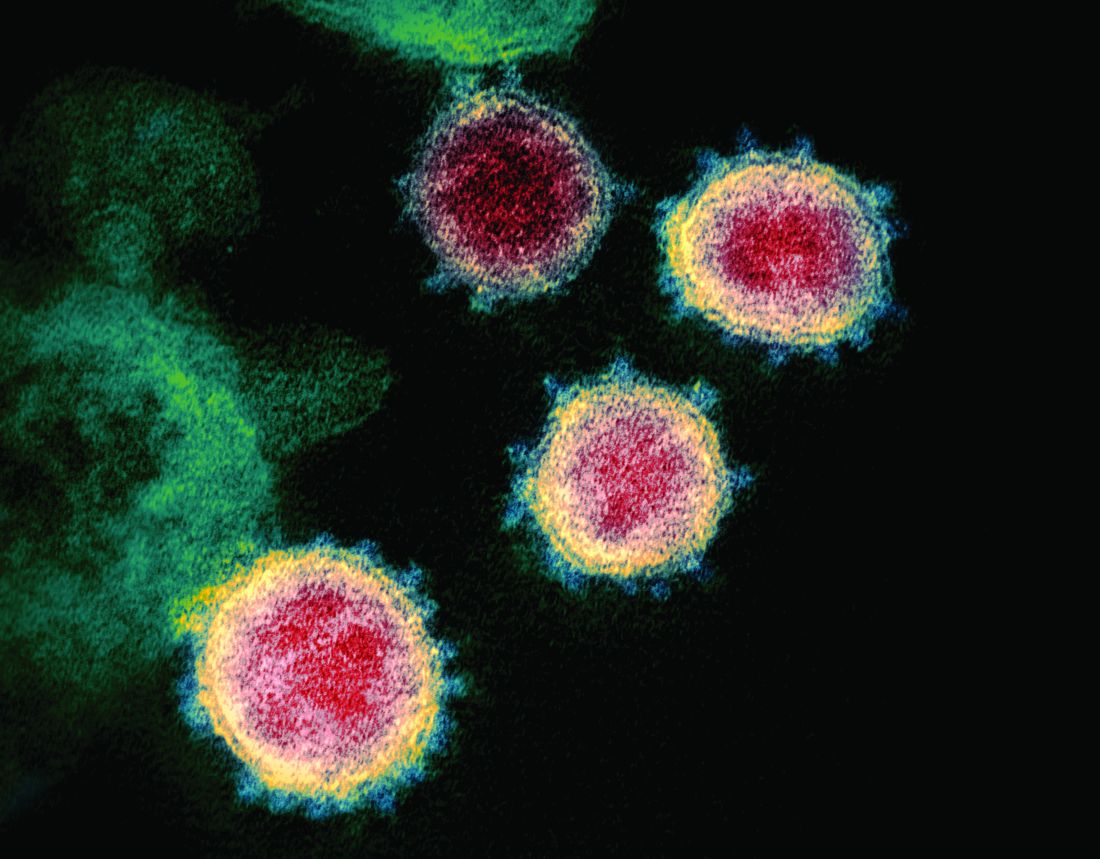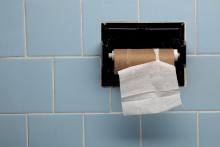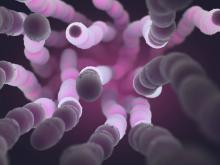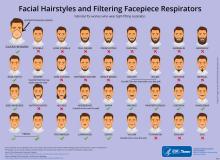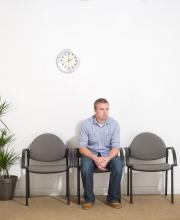User login
Porous pill printing and prognostic poop
Printing meds per patient
What if there was a way to get exact doses of a medication, tailored specifically for each and every patient that needed it? Well, apparently it’s as easy as getting them out of a printer.
Researchers from the University of East Anglia in England may have found a new method to do just that.
Currently, medicine is “manufactured in ‘one-size-fits-all’ fashion,” said Dr. Sheng Qi, the research lead. But no patient is exactly the same, so why shouldn’t their medications be just as unique? Research on pharmaceutical 3D printing has been developing over the past 5 years, with the most common method requiring the drug to be put into “spaghetti-like filaments” before printing.
Dr. Qi and his team developed a process that bypasses the filaments, allowing them to 3D-print pills with varied porous structures that can regulate the rate of release of the drug into the body. This could be revolutionary for elderly patients and patients with complicated conditions – who often take many different drugs – to ensure more accurate doses that provide maximum benefits and minimal adverse effects.
Just as a custom-tailored suit perfectly fits the body for which it was made, the ability to tailor medication could have the same effect on a patient’s health. The only difference is what’s coming through the printer would be pills, not fabric.
It’s hip to be Pfizered
COVID-19 vaccination levels are rising, but we’ve heard a rumor that some people are still a bit reticent to participate. So how can physicians get more people to come in for a shot?
Make sure that they’re giving patients the right vaccine, for one thing. And by “right” vaccine, we mean, of course, the cool vaccine. Yes, the Internet has decided that the Pfizer vaccine is cooler than the others, according to the Atlantic.
There is, it seems, such a thing as “Pfizer superiority complex,” the article noted, while adding that, “on TikTok, hundreds of videos use a soundtrack of a woman explaining – slowly, voice full of disdain, like the rudest preschool teacher on Earth – ‘Only hot people get the Pfizer vaccine.’ ” A reporter from Slate was welcomed “to the ruling class” after sharing her upcoming Pfizer vaccination.
For the ultimate test of coolness, we surveyed the LOTME staff about the COVID-19 vaccines they had received. The results? Two Pfizers (coincidentally, the only two who knew what the hell TikTok is), one Moderna, one Johnson & Johnson, and one Godbold’s Vegetable Balsam (coincidentally, the same one who told us to get off his lawn).
And yes, we are checking on that last one.
Allergies stink!
A baby’s first bowel movement might mean more than just being the first of many diaper changes.
That particular bowel movement, called meconium, is a mixture of materials that have gone into a baby’s mouth late in the pregnancy, such as skin cells and amniotic fluid. Sounds lovely, right? The contents also include certain biochemicals and gut bacteria, and a lack of these can show an increased risk of allergies, eczema, and asthma.
Studies show that certain gut bacteria actually teach the immune system to accept compounds that are not harmful. Since allergies and other conditions are caused by a person’s immune system telling them harmless compounds are bad, it makes sense that lacking gut bacteria might show potential for developing such conditions.
Charisse Petersen, a researcher at the University of British Columbia in Vancouver, told NewScientist that parents could help decrease the development of allergies by not giving their children antibiotics that aren’t necessary and by letting kids play outside more.
Tom Marrs of King’s College London even noted that having a dog in the house is linked to a lower risk of allergies, so it might be time to get that puppy that the kids have been begging you for all through the pandemic.
Indiana Jones and the outhouse of parasites
Some archaeological finds are more impressive than others. Sometimes you find evidence of some long-lost civilization, sometimes you find a 200-year-old outhouse. That was the case with an outhouse buried near Dartmouth College that belonged to Mill Olcott, a wealthy businessman and politician who was a graduate of the college, and his family.
Now, that’s not particularly medically interesting, but the contents of the outhouse were very well preserved. That treasure trove included some fecal samples, and that’s where the story gets good, since they were preserved enough to be analyzed for parasites. Now, researchers know that parasites were very common in urban areas back in those days, when medicinal knowledge and sanitation were still deep in the dark ages, but whether or not people who lived in rural areas, wealthy or not, had them as well was a mystery.
Of course, 200-year-old poop is 200-year-old poop, so, in a task we wouldn’t envy anyone, the samples were rehydrated and run through several sieves to isolate the ancient goodies within. When all was said and done, both tapeworm and whipworm eggs were found, a surprise considering parasitic preference for warmer environments – not something northern New England is known for. But don’t forget, parasites can be your friend, too.
We will probably never know just which member of the Olcott household the poop belonged to, but the researchers noted that it was almost certain the entire house was infected. They added that, without proper infrastructure, even wealth was unable to protect people from disease. Hmm, we can’t think of any relevance that has in today’s world. Nope, absolutely none, since our health infrastructure is literally without flaw.
Printing meds per patient
What if there was a way to get exact doses of a medication, tailored specifically for each and every patient that needed it? Well, apparently it’s as easy as getting them out of a printer.
Researchers from the University of East Anglia in England may have found a new method to do just that.
Currently, medicine is “manufactured in ‘one-size-fits-all’ fashion,” said Dr. Sheng Qi, the research lead. But no patient is exactly the same, so why shouldn’t their medications be just as unique? Research on pharmaceutical 3D printing has been developing over the past 5 years, with the most common method requiring the drug to be put into “spaghetti-like filaments” before printing.
Dr. Qi and his team developed a process that bypasses the filaments, allowing them to 3D-print pills with varied porous structures that can regulate the rate of release of the drug into the body. This could be revolutionary for elderly patients and patients with complicated conditions – who often take many different drugs – to ensure more accurate doses that provide maximum benefits and minimal adverse effects.
Just as a custom-tailored suit perfectly fits the body for which it was made, the ability to tailor medication could have the same effect on a patient’s health. The only difference is what’s coming through the printer would be pills, not fabric.
It’s hip to be Pfizered
COVID-19 vaccination levels are rising, but we’ve heard a rumor that some people are still a bit reticent to participate. So how can physicians get more people to come in for a shot?
Make sure that they’re giving patients the right vaccine, for one thing. And by “right” vaccine, we mean, of course, the cool vaccine. Yes, the Internet has decided that the Pfizer vaccine is cooler than the others, according to the Atlantic.
There is, it seems, such a thing as “Pfizer superiority complex,” the article noted, while adding that, “on TikTok, hundreds of videos use a soundtrack of a woman explaining – slowly, voice full of disdain, like the rudest preschool teacher on Earth – ‘Only hot people get the Pfizer vaccine.’ ” A reporter from Slate was welcomed “to the ruling class” after sharing her upcoming Pfizer vaccination.
For the ultimate test of coolness, we surveyed the LOTME staff about the COVID-19 vaccines they had received. The results? Two Pfizers (coincidentally, the only two who knew what the hell TikTok is), one Moderna, one Johnson & Johnson, and one Godbold’s Vegetable Balsam (coincidentally, the same one who told us to get off his lawn).
And yes, we are checking on that last one.
Allergies stink!
A baby’s first bowel movement might mean more than just being the first of many diaper changes.
That particular bowel movement, called meconium, is a mixture of materials that have gone into a baby’s mouth late in the pregnancy, such as skin cells and amniotic fluid. Sounds lovely, right? The contents also include certain biochemicals and gut bacteria, and a lack of these can show an increased risk of allergies, eczema, and asthma.
Studies show that certain gut bacteria actually teach the immune system to accept compounds that are not harmful. Since allergies and other conditions are caused by a person’s immune system telling them harmless compounds are bad, it makes sense that lacking gut bacteria might show potential for developing such conditions.
Charisse Petersen, a researcher at the University of British Columbia in Vancouver, told NewScientist that parents could help decrease the development of allergies by not giving their children antibiotics that aren’t necessary and by letting kids play outside more.
Tom Marrs of King’s College London even noted that having a dog in the house is linked to a lower risk of allergies, so it might be time to get that puppy that the kids have been begging you for all through the pandemic.
Indiana Jones and the outhouse of parasites
Some archaeological finds are more impressive than others. Sometimes you find evidence of some long-lost civilization, sometimes you find a 200-year-old outhouse. That was the case with an outhouse buried near Dartmouth College that belonged to Mill Olcott, a wealthy businessman and politician who was a graduate of the college, and his family.
Now, that’s not particularly medically interesting, but the contents of the outhouse were very well preserved. That treasure trove included some fecal samples, and that’s where the story gets good, since they were preserved enough to be analyzed for parasites. Now, researchers know that parasites were very common in urban areas back in those days, when medicinal knowledge and sanitation were still deep in the dark ages, but whether or not people who lived in rural areas, wealthy or not, had them as well was a mystery.
Of course, 200-year-old poop is 200-year-old poop, so, in a task we wouldn’t envy anyone, the samples were rehydrated and run through several sieves to isolate the ancient goodies within. When all was said and done, both tapeworm and whipworm eggs were found, a surprise considering parasitic preference for warmer environments – not something northern New England is known for. But don’t forget, parasites can be your friend, too.
We will probably never know just which member of the Olcott household the poop belonged to, but the researchers noted that it was almost certain the entire house was infected. They added that, without proper infrastructure, even wealth was unable to protect people from disease. Hmm, we can’t think of any relevance that has in today’s world. Nope, absolutely none, since our health infrastructure is literally without flaw.
Printing meds per patient
What if there was a way to get exact doses of a medication, tailored specifically for each and every patient that needed it? Well, apparently it’s as easy as getting them out of a printer.
Researchers from the University of East Anglia in England may have found a new method to do just that.
Currently, medicine is “manufactured in ‘one-size-fits-all’ fashion,” said Dr. Sheng Qi, the research lead. But no patient is exactly the same, so why shouldn’t their medications be just as unique? Research on pharmaceutical 3D printing has been developing over the past 5 years, with the most common method requiring the drug to be put into “spaghetti-like filaments” before printing.
Dr. Qi and his team developed a process that bypasses the filaments, allowing them to 3D-print pills with varied porous structures that can regulate the rate of release of the drug into the body. This could be revolutionary for elderly patients and patients with complicated conditions – who often take many different drugs – to ensure more accurate doses that provide maximum benefits and minimal adverse effects.
Just as a custom-tailored suit perfectly fits the body for which it was made, the ability to tailor medication could have the same effect on a patient’s health. The only difference is what’s coming through the printer would be pills, not fabric.
It’s hip to be Pfizered
COVID-19 vaccination levels are rising, but we’ve heard a rumor that some people are still a bit reticent to participate. So how can physicians get more people to come in for a shot?
Make sure that they’re giving patients the right vaccine, for one thing. And by “right” vaccine, we mean, of course, the cool vaccine. Yes, the Internet has decided that the Pfizer vaccine is cooler than the others, according to the Atlantic.
There is, it seems, such a thing as “Pfizer superiority complex,” the article noted, while adding that, “on TikTok, hundreds of videos use a soundtrack of a woman explaining – slowly, voice full of disdain, like the rudest preschool teacher on Earth – ‘Only hot people get the Pfizer vaccine.’ ” A reporter from Slate was welcomed “to the ruling class” after sharing her upcoming Pfizer vaccination.
For the ultimate test of coolness, we surveyed the LOTME staff about the COVID-19 vaccines they had received. The results? Two Pfizers (coincidentally, the only two who knew what the hell TikTok is), one Moderna, one Johnson & Johnson, and one Godbold’s Vegetable Balsam (coincidentally, the same one who told us to get off his lawn).
And yes, we are checking on that last one.
Allergies stink!
A baby’s first bowel movement might mean more than just being the first of many diaper changes.
That particular bowel movement, called meconium, is a mixture of materials that have gone into a baby’s mouth late in the pregnancy, such as skin cells and amniotic fluid. Sounds lovely, right? The contents also include certain biochemicals and gut bacteria, and a lack of these can show an increased risk of allergies, eczema, and asthma.
Studies show that certain gut bacteria actually teach the immune system to accept compounds that are not harmful. Since allergies and other conditions are caused by a person’s immune system telling them harmless compounds are bad, it makes sense that lacking gut bacteria might show potential for developing such conditions.
Charisse Petersen, a researcher at the University of British Columbia in Vancouver, told NewScientist that parents could help decrease the development of allergies by not giving their children antibiotics that aren’t necessary and by letting kids play outside more.
Tom Marrs of King’s College London even noted that having a dog in the house is linked to a lower risk of allergies, so it might be time to get that puppy that the kids have been begging you for all through the pandemic.
Indiana Jones and the outhouse of parasites
Some archaeological finds are more impressive than others. Sometimes you find evidence of some long-lost civilization, sometimes you find a 200-year-old outhouse. That was the case with an outhouse buried near Dartmouth College that belonged to Mill Olcott, a wealthy businessman and politician who was a graduate of the college, and his family.
Now, that’s not particularly medically interesting, but the contents of the outhouse were very well preserved. That treasure trove included some fecal samples, and that’s where the story gets good, since they were preserved enough to be analyzed for parasites. Now, researchers know that parasites were very common in urban areas back in those days, when medicinal knowledge and sanitation were still deep in the dark ages, but whether or not people who lived in rural areas, wealthy or not, had them as well was a mystery.
Of course, 200-year-old poop is 200-year-old poop, so, in a task we wouldn’t envy anyone, the samples were rehydrated and run through several sieves to isolate the ancient goodies within. When all was said and done, both tapeworm and whipworm eggs were found, a surprise considering parasitic preference for warmer environments – not something northern New England is known for. But don’t forget, parasites can be your friend, too.
We will probably never know just which member of the Olcott household the poop belonged to, but the researchers noted that it was almost certain the entire house was infected. They added that, without proper infrastructure, even wealth was unable to protect people from disease. Hmm, we can’t think of any relevance that has in today’s world. Nope, absolutely none, since our health infrastructure is literally without flaw.
Drinking your way to heart failure, and the fringe benefits of COVID-19 vaccination
Energy drink doom
Who doesn’t need some caffeine to get going in the morning and keep moving throughout the day? Whether it’s tea, coffee, or energy drinks, people can get addicted to caffeinated beverages when there are only so many hours in a day and way too much work to get done.
That’s what happened to a 21-year-old college student who powered down four 16-ounce cans of energy drink – each with double the amount of caffeine in an ordinary cup of coffee – every day for 2 years. Now, if you’ve ever overdone it with caffeine, you know there are some uncomfortable side effects, like shaking and anxiety. In this case, the student reported migraines, tremors, and heart palpitations. Instead of being able to focus better on his work, he had trouble concentrating.
Over time, after these side effects took a turn for the worse and became shortness of breath and weight loss, he visited St. Thomas’ Hospital in London, where physicians diagnosed him with both heart and renal failure.
Excessive consumption of energy drinks is known to cause issues such as high blood pressure and irregular heart beat, so if that’s your fuel of choice, it might be worth cutting down. Maybe take a morning run to get the blood pumping – in a good way – instead?
Loneliness may be hazardous to your health
Sometimes loneliness can feel like it affects your physical health, but according to a study there’s a possibility that it actually does.
Back in the 1980s, researchers from the University of Eastern Finland started monitoring almost 3,000 middle-aged men. They’ve kept up with the participants until the present day, and the results have been staggering. After an average follow-up of over 20 years, 25% of participants developed cancer and 11% died from cancer, and the increase in risk from loneliness was about 10%, regardless of age, lifestyle, and BMI.
What does that say about preventive care? The researchers think these data are cause enough to pay attention to loneliness as a health issue along with smoking and weight.
Social interactions and relationships play important roles in human mental health, of course, but this is pretty solid evidence that they play a role in physical health too. As the researchers said, “Awareness of the health effects of loneliness is constantly increasing. Therefore, it is important to examine, in more detail, the mechanisms by which loneliness causes adverse health effects.”
So, as we progress through this pandemic, maybe you should join that social group on Facebook? Who knows what kind of effect it could have on your health?
An ounce of prevention is worth 12 ounces of lager
COVID-19 vaccine refusal is now a thing, and there’s no law that says people have to be immunized against our newest, bestest buddy, SARS-CoV-2, but the folks who skip it are missing out. And no, we’re not talking about immunity against disease.
We’re talking … FREE STUFF!
Corporate America has stepped up and is now rewarding those who get the COVID-19 vaccine:
- Budweiser will give a free beer to anyone – anyone over age 21, that is – with proof of vaccination until May 16.
- Show a vaccination card at a Krispy Kreme and you can get a free glazed doughnut, every day. You don’t even need to buy anything.
- White Castle will give you a free dessert-on-a-stick just for showing proof of vaccination. No purchase is required, but the offer ends May 31.
But wait, there’s more!
Even the public sector is getting in on the giveaway action. Gov. Jim Justice announced April 26 that West Virginia will give a $100 savings bond to any resident aged 16-35 years who receives a COVID-19 vaccine. It must make sense, because the governor broke out a white board to show residents he’s done the math.
One closing thought: How cool would it be if he was named to the Supreme Court, so he could be Justice Justice?
Where no shirt has gone before
Space. The final frontier, for both humanity and for shirts. Specifically, it’s a new frontier for the Bio-Monitor smart shirt, a tank-top filled with sensors that monitor the wearer’s stats, such as heart and breathing rate, oxygen saturation, skin temperature, and blood pressure. And you thought space was just for finding a new human habitat and growing steak.
This shirt is already used by athletes to assess performance and by people with limited mobility to monitor health, so its potential impending usage by astronauts makes sense. Space is a pretty extreme environment, to put it mildly, and there’s a lot we still don’t know about how the human body reacts to it. Traditionally, astronauts hook themselves up to separate devices so their stats can be measured, a method which captures only snapshots of their bodies. By wearing the shirt constantly, the astronauts can be measured constantly, so scientists and doctors can see how the body deals with microgravity during normal activities and sleep. It also reduces stress, as there is no psychological impact of having to report in for constant health checks.
For the test, astronauts wore the shirt for 72 hours before flight and for 72 hours during flight. The shirts passed this first test with flying colors; in addition to providing accurate and more consistent stats monitoring than traditional methods, scientists on the ground determined that the astronauts recorded far less physical activity during flight than preflight, a finding in line with previous studies.
And before you question whether or not a tank top is really appropriate for space, just remember, Picard pulled it off at the end of “First Contact,” and that’s arguably the best Star Trek movie. So there’s certainly precedent.
Energy drink doom
Who doesn’t need some caffeine to get going in the morning and keep moving throughout the day? Whether it’s tea, coffee, or energy drinks, people can get addicted to caffeinated beverages when there are only so many hours in a day and way too much work to get done.
That’s what happened to a 21-year-old college student who powered down four 16-ounce cans of energy drink – each with double the amount of caffeine in an ordinary cup of coffee – every day for 2 years. Now, if you’ve ever overdone it with caffeine, you know there are some uncomfortable side effects, like shaking and anxiety. In this case, the student reported migraines, tremors, and heart palpitations. Instead of being able to focus better on his work, he had trouble concentrating.
Over time, after these side effects took a turn for the worse and became shortness of breath and weight loss, he visited St. Thomas’ Hospital in London, where physicians diagnosed him with both heart and renal failure.
Excessive consumption of energy drinks is known to cause issues such as high blood pressure and irregular heart beat, so if that’s your fuel of choice, it might be worth cutting down. Maybe take a morning run to get the blood pumping – in a good way – instead?
Loneliness may be hazardous to your health
Sometimes loneliness can feel like it affects your physical health, but according to a study there’s a possibility that it actually does.
Back in the 1980s, researchers from the University of Eastern Finland started monitoring almost 3,000 middle-aged men. They’ve kept up with the participants until the present day, and the results have been staggering. After an average follow-up of over 20 years, 25% of participants developed cancer and 11% died from cancer, and the increase in risk from loneliness was about 10%, regardless of age, lifestyle, and BMI.
What does that say about preventive care? The researchers think these data are cause enough to pay attention to loneliness as a health issue along with smoking and weight.
Social interactions and relationships play important roles in human mental health, of course, but this is pretty solid evidence that they play a role in physical health too. As the researchers said, “Awareness of the health effects of loneliness is constantly increasing. Therefore, it is important to examine, in more detail, the mechanisms by which loneliness causes adverse health effects.”
So, as we progress through this pandemic, maybe you should join that social group on Facebook? Who knows what kind of effect it could have on your health?
An ounce of prevention is worth 12 ounces of lager
COVID-19 vaccine refusal is now a thing, and there’s no law that says people have to be immunized against our newest, bestest buddy, SARS-CoV-2, but the folks who skip it are missing out. And no, we’re not talking about immunity against disease.
We’re talking … FREE STUFF!
Corporate America has stepped up and is now rewarding those who get the COVID-19 vaccine:
- Budweiser will give a free beer to anyone – anyone over age 21, that is – with proof of vaccination until May 16.
- Show a vaccination card at a Krispy Kreme and you can get a free glazed doughnut, every day. You don’t even need to buy anything.
- White Castle will give you a free dessert-on-a-stick just for showing proof of vaccination. No purchase is required, but the offer ends May 31.
But wait, there’s more!
Even the public sector is getting in on the giveaway action. Gov. Jim Justice announced April 26 that West Virginia will give a $100 savings bond to any resident aged 16-35 years who receives a COVID-19 vaccine. It must make sense, because the governor broke out a white board to show residents he’s done the math.
One closing thought: How cool would it be if he was named to the Supreme Court, so he could be Justice Justice?
Where no shirt has gone before
Space. The final frontier, for both humanity and for shirts. Specifically, it’s a new frontier for the Bio-Monitor smart shirt, a tank-top filled with sensors that monitor the wearer’s stats, such as heart and breathing rate, oxygen saturation, skin temperature, and blood pressure. And you thought space was just for finding a new human habitat and growing steak.
This shirt is already used by athletes to assess performance and by people with limited mobility to monitor health, so its potential impending usage by astronauts makes sense. Space is a pretty extreme environment, to put it mildly, and there’s a lot we still don’t know about how the human body reacts to it. Traditionally, astronauts hook themselves up to separate devices so their stats can be measured, a method which captures only snapshots of their bodies. By wearing the shirt constantly, the astronauts can be measured constantly, so scientists and doctors can see how the body deals with microgravity during normal activities and sleep. It also reduces stress, as there is no psychological impact of having to report in for constant health checks.
For the test, astronauts wore the shirt for 72 hours before flight and for 72 hours during flight. The shirts passed this first test with flying colors; in addition to providing accurate and more consistent stats monitoring than traditional methods, scientists on the ground determined that the astronauts recorded far less physical activity during flight than preflight, a finding in line with previous studies.
And before you question whether or not a tank top is really appropriate for space, just remember, Picard pulled it off at the end of “First Contact,” and that’s arguably the best Star Trek movie. So there’s certainly precedent.
Energy drink doom
Who doesn’t need some caffeine to get going in the morning and keep moving throughout the day? Whether it’s tea, coffee, or energy drinks, people can get addicted to caffeinated beverages when there are only so many hours in a day and way too much work to get done.
That’s what happened to a 21-year-old college student who powered down four 16-ounce cans of energy drink – each with double the amount of caffeine in an ordinary cup of coffee – every day for 2 years. Now, if you’ve ever overdone it with caffeine, you know there are some uncomfortable side effects, like shaking and anxiety. In this case, the student reported migraines, tremors, and heart palpitations. Instead of being able to focus better on his work, he had trouble concentrating.
Over time, after these side effects took a turn for the worse and became shortness of breath and weight loss, he visited St. Thomas’ Hospital in London, where physicians diagnosed him with both heart and renal failure.
Excessive consumption of energy drinks is known to cause issues such as high blood pressure and irregular heart beat, so if that’s your fuel of choice, it might be worth cutting down. Maybe take a morning run to get the blood pumping – in a good way – instead?
Loneliness may be hazardous to your health
Sometimes loneliness can feel like it affects your physical health, but according to a study there’s a possibility that it actually does.
Back in the 1980s, researchers from the University of Eastern Finland started monitoring almost 3,000 middle-aged men. They’ve kept up with the participants until the present day, and the results have been staggering. After an average follow-up of over 20 years, 25% of participants developed cancer and 11% died from cancer, and the increase in risk from loneliness was about 10%, regardless of age, lifestyle, and BMI.
What does that say about preventive care? The researchers think these data are cause enough to pay attention to loneliness as a health issue along with smoking and weight.
Social interactions and relationships play important roles in human mental health, of course, but this is pretty solid evidence that they play a role in physical health too. As the researchers said, “Awareness of the health effects of loneliness is constantly increasing. Therefore, it is important to examine, in more detail, the mechanisms by which loneliness causes adverse health effects.”
So, as we progress through this pandemic, maybe you should join that social group on Facebook? Who knows what kind of effect it could have on your health?
An ounce of prevention is worth 12 ounces of lager
COVID-19 vaccine refusal is now a thing, and there’s no law that says people have to be immunized against our newest, bestest buddy, SARS-CoV-2, but the folks who skip it are missing out. And no, we’re not talking about immunity against disease.
We’re talking … FREE STUFF!
Corporate America has stepped up and is now rewarding those who get the COVID-19 vaccine:
- Budweiser will give a free beer to anyone – anyone over age 21, that is – with proof of vaccination until May 16.
- Show a vaccination card at a Krispy Kreme and you can get a free glazed doughnut, every day. You don’t even need to buy anything.
- White Castle will give you a free dessert-on-a-stick just for showing proof of vaccination. No purchase is required, but the offer ends May 31.
But wait, there’s more!
Even the public sector is getting in on the giveaway action. Gov. Jim Justice announced April 26 that West Virginia will give a $100 savings bond to any resident aged 16-35 years who receives a COVID-19 vaccine. It must make sense, because the governor broke out a white board to show residents he’s done the math.
One closing thought: How cool would it be if he was named to the Supreme Court, so he could be Justice Justice?
Where no shirt has gone before
Space. The final frontier, for both humanity and for shirts. Specifically, it’s a new frontier for the Bio-Monitor smart shirt, a tank-top filled with sensors that monitor the wearer’s stats, such as heart and breathing rate, oxygen saturation, skin temperature, and blood pressure. And you thought space was just for finding a new human habitat and growing steak.
This shirt is already used by athletes to assess performance and by people with limited mobility to monitor health, so its potential impending usage by astronauts makes sense. Space is a pretty extreme environment, to put it mildly, and there’s a lot we still don’t know about how the human body reacts to it. Traditionally, astronauts hook themselves up to separate devices so their stats can be measured, a method which captures only snapshots of their bodies. By wearing the shirt constantly, the astronauts can be measured constantly, so scientists and doctors can see how the body deals with microgravity during normal activities and sleep. It also reduces stress, as there is no psychological impact of having to report in for constant health checks.
For the test, astronauts wore the shirt for 72 hours before flight and for 72 hours during flight. The shirts passed this first test with flying colors; in addition to providing accurate and more consistent stats monitoring than traditional methods, scientists on the ground determined that the astronauts recorded far less physical activity during flight than preflight, a finding in line with previous studies.
And before you question whether or not a tank top is really appropriate for space, just remember, Picard pulled it off at the end of “First Contact,” and that’s arguably the best Star Trek movie. So there’s certainly precedent.
Helpful giant rodents and our old friend, the hookworm
Rat-ting out coronavirus
Did you know there is a possibility that giant rodents could rat out coronavirus? Not many people are keen on the presence of a 3-foot-long African giant pouched rat, but they have already been trained to sniff out diseases that are dangerous to humans, such as brucellosis and tuberculosis, according to researchers at the University of Glasgow.
Professor Dan Haydon and his associates believe there is a good possibility that the rats can be trained to sniff out COVID-19. Dogs have been helpful in sniffing for COVID-19 at airports and are being trained to detect it through armpit sweat, making detection of the virus easier for travelers and staff. Even robots have gotten into the COVID-19 detecting act.
Since African giant pouched rats can grow to be the size of a small dog and “are easily tamed as companion animals,” it seems likely that they have the potential to do the same. That is, sniffing for COVID-19, not appearing at your local airport. That’s still gross.
Stay healthy, get a parasite bestie
The key to health could actually be swimming around in your gut. Researchers from University College London have found that a parasitic worm could be the answer to longevity and avoidance of chronic diseases.
The seeming immunity from inflammatory diseases such as arthritis, diabetes, and multiple sclerosis may come from helminth parasites, or hookworms – parasites that have been coexisting harmlessly with the human body for thousands of years. The investigators went so far as to call them “old friends,” but the kind that you rarely see at reunions or call up for a favor.
As a result of modern sanitation and improved hygiene, humans and hookworms are seeing much less of each other, which may be a factor in the rise of “aging-associated inflammation” such as COVID-19 symptoms, they suggested. So is there a way to get these old friends back?
“Restorative hookworm treatments” could help with heart disease or dementia, according to the investigators, but maybe you’re not totally on board with getting an actual parasite in your system. We get it. There are helminth-derived proteins that have already been tested to get the job done.
Maybe old friends really do make the best friends.
I love the smell of microbe-infected aerosols in the morning
Have you gone into a public restroom and just stood around for a while appreciating the fine aromas? No? You haven’t? You do your business and get out? Well, it’s a good thing you act like a normal person, because the aerosols released when toilets flush can contain all sorts of nasty bacteria and viruses.
The authors of a new study published in Physics of Fluids came to this groundbreaking conclusion by going to a public bathroom, sticking particle counters above a urinal and a toilet, and letting them sit for a while. After 3 hours and 100 flushes, the ambient level of particles 0.3-3 mcm in diameter had increased dramatically, with particles sized 0.5-1 mcm particularly prone to lingering. For those particles, the level from baseline increased by over 200%.
This is a major concern, the researchers said, because the sort of microbes that are expelled through feces, urine, and vomit can include some pretty nasty things. Ebola, noroviruses that can cause food poisoning, and even good old SARS-CoV-2 can be expelled from the body but remain viable for a time in these aerosols. The researchers recommended improving the ventilation systems in restrooms so that aerosols don’t hang around for hours at a time. Plus, it might make the place not smell like a, uh, public restroom.
Not to question the research and the people behind it, but we’re not sure how necessary it was to give people another reason not to hang out in a place where hundreds, if not thousands, of people come to relieve themselves. There’s a reason we’re supposed to “stop and smell the roses” and not “stop and smell the public bathroom.”
World ends not with a bang but with a cheeseburger
Speaking of old sayings, one of our favorites, “You are what you eat,” may offer a culinary explanation for those who do enjoy the ambiance of a fine, aerosol-infested public restroom.
That explanation involves the high-calorie, high-fat smorgasbord known as the Western diet and some mice who were forced to consume it. Those mice, it turns out, were more anxious and less cognitively advanced than their counterparts who were not eating “highly palatable, energy dense foods (e.g., high saturated fat, high sugar) that are commonly consumed by humans,” according to the authors of a recent literature review.
“Consumption of a Western diet is related to poorer cognitive performance across the lifespan,” the investigators said, adding that consumption of a Western diet “during critical early life stages of development has negative consequences on various cognitive abilities later in adulthood.”
To show their appreciation for the sacrifices these brave test subjects had made in the name of science, the scientists released the Western diet–addled rodents from captivity. Not only did they survive and thrive in the wilds of darkest suburbia, but within 6 months almost half of them were running for Congress.
Rat-ting out coronavirus
Did you know there is a possibility that giant rodents could rat out coronavirus? Not many people are keen on the presence of a 3-foot-long African giant pouched rat, but they have already been trained to sniff out diseases that are dangerous to humans, such as brucellosis and tuberculosis, according to researchers at the University of Glasgow.
Professor Dan Haydon and his associates believe there is a good possibility that the rats can be trained to sniff out COVID-19. Dogs have been helpful in sniffing for COVID-19 at airports and are being trained to detect it through armpit sweat, making detection of the virus easier for travelers and staff. Even robots have gotten into the COVID-19 detecting act.
Since African giant pouched rats can grow to be the size of a small dog and “are easily tamed as companion animals,” it seems likely that they have the potential to do the same. That is, sniffing for COVID-19, not appearing at your local airport. That’s still gross.
Stay healthy, get a parasite bestie
The key to health could actually be swimming around in your gut. Researchers from University College London have found that a parasitic worm could be the answer to longevity and avoidance of chronic diseases.
The seeming immunity from inflammatory diseases such as arthritis, diabetes, and multiple sclerosis may come from helminth parasites, or hookworms – parasites that have been coexisting harmlessly with the human body for thousands of years. The investigators went so far as to call them “old friends,” but the kind that you rarely see at reunions or call up for a favor.
As a result of modern sanitation and improved hygiene, humans and hookworms are seeing much less of each other, which may be a factor in the rise of “aging-associated inflammation” such as COVID-19 symptoms, they suggested. So is there a way to get these old friends back?
“Restorative hookworm treatments” could help with heart disease or dementia, according to the investigators, but maybe you’re not totally on board with getting an actual parasite in your system. We get it. There are helminth-derived proteins that have already been tested to get the job done.
Maybe old friends really do make the best friends.
I love the smell of microbe-infected aerosols in the morning
Have you gone into a public restroom and just stood around for a while appreciating the fine aromas? No? You haven’t? You do your business and get out? Well, it’s a good thing you act like a normal person, because the aerosols released when toilets flush can contain all sorts of nasty bacteria and viruses.
The authors of a new study published in Physics of Fluids came to this groundbreaking conclusion by going to a public bathroom, sticking particle counters above a urinal and a toilet, and letting them sit for a while. After 3 hours and 100 flushes, the ambient level of particles 0.3-3 mcm in diameter had increased dramatically, with particles sized 0.5-1 mcm particularly prone to lingering. For those particles, the level from baseline increased by over 200%.
This is a major concern, the researchers said, because the sort of microbes that are expelled through feces, urine, and vomit can include some pretty nasty things. Ebola, noroviruses that can cause food poisoning, and even good old SARS-CoV-2 can be expelled from the body but remain viable for a time in these aerosols. The researchers recommended improving the ventilation systems in restrooms so that aerosols don’t hang around for hours at a time. Plus, it might make the place not smell like a, uh, public restroom.
Not to question the research and the people behind it, but we’re not sure how necessary it was to give people another reason not to hang out in a place where hundreds, if not thousands, of people come to relieve themselves. There’s a reason we’re supposed to “stop and smell the roses” and not “stop and smell the public bathroom.”
World ends not with a bang but with a cheeseburger
Speaking of old sayings, one of our favorites, “You are what you eat,” may offer a culinary explanation for those who do enjoy the ambiance of a fine, aerosol-infested public restroom.
That explanation involves the high-calorie, high-fat smorgasbord known as the Western diet and some mice who were forced to consume it. Those mice, it turns out, were more anxious and less cognitively advanced than their counterparts who were not eating “highly palatable, energy dense foods (e.g., high saturated fat, high sugar) that are commonly consumed by humans,” according to the authors of a recent literature review.
“Consumption of a Western diet is related to poorer cognitive performance across the lifespan,” the investigators said, adding that consumption of a Western diet “during critical early life stages of development has negative consequences on various cognitive abilities later in adulthood.”
To show their appreciation for the sacrifices these brave test subjects had made in the name of science, the scientists released the Western diet–addled rodents from captivity. Not only did they survive and thrive in the wilds of darkest suburbia, but within 6 months almost half of them were running for Congress.
Rat-ting out coronavirus
Did you know there is a possibility that giant rodents could rat out coronavirus? Not many people are keen on the presence of a 3-foot-long African giant pouched rat, but they have already been trained to sniff out diseases that are dangerous to humans, such as brucellosis and tuberculosis, according to researchers at the University of Glasgow.
Professor Dan Haydon and his associates believe there is a good possibility that the rats can be trained to sniff out COVID-19. Dogs have been helpful in sniffing for COVID-19 at airports and are being trained to detect it through armpit sweat, making detection of the virus easier for travelers and staff. Even robots have gotten into the COVID-19 detecting act.
Since African giant pouched rats can grow to be the size of a small dog and “are easily tamed as companion animals,” it seems likely that they have the potential to do the same. That is, sniffing for COVID-19, not appearing at your local airport. That’s still gross.
Stay healthy, get a parasite bestie
The key to health could actually be swimming around in your gut. Researchers from University College London have found that a parasitic worm could be the answer to longevity and avoidance of chronic diseases.
The seeming immunity from inflammatory diseases such as arthritis, diabetes, and multiple sclerosis may come from helminth parasites, or hookworms – parasites that have been coexisting harmlessly with the human body for thousands of years. The investigators went so far as to call them “old friends,” but the kind that you rarely see at reunions or call up for a favor.
As a result of modern sanitation and improved hygiene, humans and hookworms are seeing much less of each other, which may be a factor in the rise of “aging-associated inflammation” such as COVID-19 symptoms, they suggested. So is there a way to get these old friends back?
“Restorative hookworm treatments” could help with heart disease or dementia, according to the investigators, but maybe you’re not totally on board with getting an actual parasite in your system. We get it. There are helminth-derived proteins that have already been tested to get the job done.
Maybe old friends really do make the best friends.
I love the smell of microbe-infected aerosols in the morning
Have you gone into a public restroom and just stood around for a while appreciating the fine aromas? No? You haven’t? You do your business and get out? Well, it’s a good thing you act like a normal person, because the aerosols released when toilets flush can contain all sorts of nasty bacteria and viruses.
The authors of a new study published in Physics of Fluids came to this groundbreaking conclusion by going to a public bathroom, sticking particle counters above a urinal and a toilet, and letting them sit for a while. After 3 hours and 100 flushes, the ambient level of particles 0.3-3 mcm in diameter had increased dramatically, with particles sized 0.5-1 mcm particularly prone to lingering. For those particles, the level from baseline increased by over 200%.
This is a major concern, the researchers said, because the sort of microbes that are expelled through feces, urine, and vomit can include some pretty nasty things. Ebola, noroviruses that can cause food poisoning, and even good old SARS-CoV-2 can be expelled from the body but remain viable for a time in these aerosols. The researchers recommended improving the ventilation systems in restrooms so that aerosols don’t hang around for hours at a time. Plus, it might make the place not smell like a, uh, public restroom.
Not to question the research and the people behind it, but we’re not sure how necessary it was to give people another reason not to hang out in a place where hundreds, if not thousands, of people come to relieve themselves. There’s a reason we’re supposed to “stop and smell the roses” and not “stop and smell the public bathroom.”
World ends not with a bang but with a cheeseburger
Speaking of old sayings, one of our favorites, “You are what you eat,” may offer a culinary explanation for those who do enjoy the ambiance of a fine, aerosol-infested public restroom.
That explanation involves the high-calorie, high-fat smorgasbord known as the Western diet and some mice who were forced to consume it. Those mice, it turns out, were more anxious and less cognitively advanced than their counterparts who were not eating “highly palatable, energy dense foods (e.g., high saturated fat, high sugar) that are commonly consumed by humans,” according to the authors of a recent literature review.
“Consumption of a Western diet is related to poorer cognitive performance across the lifespan,” the investigators said, adding that consumption of a Western diet “during critical early life stages of development has negative consequences on various cognitive abilities later in adulthood.”
To show their appreciation for the sacrifices these brave test subjects had made in the name of science, the scientists released the Western diet–addled rodents from captivity. Not only did they survive and thrive in the wilds of darkest suburbia, but within 6 months almost half of them were running for Congress.
Seeing is bleeding, and smelling is perceiving
True Blood casting call!
If you’ve seen the show True Blood on HBO, you’re probably familiar with blood coming out instead of tears when any of the vampires start crying. Apparently, this interesting phenomenon isn’t unique to vampires on TV.
If you know about female anatomy, you know that the eyes aren’t usually involved in the menstrual cycle. However, a 25-year-old woman went to the ED when she experienced haemolacria, the term for blood tears, for the second time in 2 months during her cycle. She did not appear to have any injuries or illnesses that caused the eye bleeding, but physicians noted that both times she had eye bleeding, she also had her period.
Menstrual bleeding outside of the uterus, called vicarious menstruation, can occur, and it seems that the patient may have had that condition.
Since there are rumors of a True Blood remake circling, perhaps the show’s writers could blend in a little medical fact with vampire fiction.
What does skinny smell like? Lemons apparently
When you smell a lemon, what comes to your mind? How does it make you feel? Now think of the scent of vanilla. How does that one make you feel? Current research suggests certain smells may have an effect on how you perceive your body image.
Researchers from the University of Sussex (England) have found that certain olfactory stimuli (such as lemons and vanilla) and audio stimuli (light steps vs. heavy steps), have a moderate effect on self-image.
During their study, participants were put through a series of auditory and olfactory tests, from listening to stilettos and boots walking across the floor, to being exposed to certain essential oils with different sound pitches.
Exposure to lemon and higher-pitched sounds (like stilettos) made participants feel lighter and was associated with thin, spiky shapes. Exposure to vanilla and lower-pitched sounds was more associated with thicker, rounded shapes. This made researchers believe that multisensory stimuli, such as scents and sounds, can have a bigger role in treating eating disorders.
Our brain functions with multiple “mental models” of ourselves. Based on sensory stimuli from our day-to-day lives, those images and perceptions of ourselves change. Someone complimenting your snazzy new sweater provokes one self-perception, while someone letting you know that your fly is down provokes another.
Well, the researchers believe that, through a sense of smell, we can alter that perception of ourselves when paired with positive influence. Doing this through wearable “interactive clothes” could help boost the confidence and self-esteem of patients struggling with body image. Light smells equals light feelings. Of course, this won’t help the nearly 5% of the world who have some kind of smell disorder.
The researchers said that more research needs to be done, but you can do your own little experiment at home. Think about yourself and how you react to certain smells. How do they make you feel? If it makes you feel good, stop and smell more often.
Pregnancy with a side of pregnancy
It was a great day when Rebecca Roberts and her partner went to the obstetrician to confirm their positive pregnancy test. They’d been trying for more than a year without success, and now they would be having a baby. Note the usage of the singular there. That will become important in a moment.
When Ms. Roberts went back for her 12-week ultrasound appointment, there was an unexpected complication: Baby had become babies. The original fetus was there and doing fine, but there was now a second, less-developed fetus who’d invited herself in unannounced. While they were technically twins, the second fetus did not form at the same time, like normal fraternal twins, instead forming from an egg that was released weeks after the first egg was fertilized.
The phenomenon, called superfetation, is incredibly rare. Prior to 2008, there were fewer than 10 reported cases in the world, according to the European Journal of Obstetrics & Gynecology and Reproductive Biology. The odds of an egg being released during pregnancy, something that’s not supposed to happen, and then having that egg also become fertilized and successfully implanted in the uterus, is astronomically small.
It was not an easy pregnancy for Ms. Roberts, and at 33 weeks into the first pregnancy, the younger fetus’s umbilical cord began to malfunction, so delivery for both was induced in September 2020. Both infants spent time in the neonatal ICU, with the younger baby being in for 3 months, but after 6 months both are doing well and developing quickly. It’s always nice to have a happy ending to one of these weird medical phenomena, especially one with such an unpleasant-sounding name. If we didn’t know better, we’d think superfetation was something really, really smelly.
What’s a little misinformation among neighbors?
Vaccination will, hopefully, get the COVID-19 pandemic under control at some point, but the related misinformation floating around the Internet is another story. Already rampant in the United States, it’s now spreading … to Canada.
Investigators from that northern land took a look at the Twitter accounts of the platform’s 187,000 most active Canadian users and eventually ended up with a database of 147 million tweets, of which 154,000 contained terms associated with misinformation.
The Canadian social media users had more exposure to information from the United States than from Canada, and the exposure to U.S. outlets was more likely to involve misperceptions about COVID-19. “Most of the misinformation circulating on Twitter shared by Canadians was retweeted from U.S. sources,” the researchers said, and “Canadians who followed more American users were more likely to post misinformation.”
The study’s lead investigator, Aengus Bridgman of McGill University in Montreal, put it this way: “It’s hard for Canadian journalists, scientists, and public health experts to be heard by the average Canadian, given all the noise generated by American sources.”
People generally don’t take the time to read the fine print on contracts, and it looks like the Canadians have fallen into that trap. Not entirely their fault, of course, because most people coming from Canada to America don’t pass the Statue of Liberty, but she’s got some fine print of her own.
That poem written on the pedestal, the one that says, “Give me your tired, your poor, your huddled masses yearning to breathe free”? It’s actually a contract, and at the bottom, in very small print, it says, “In return for acceptance of the aforementioned ‘huddled masses,’ countries of origin agree to accept all of the social media noise generated by American sources.”
Sorry, Canada, but we gotcha.
True Blood casting call!
If you’ve seen the show True Blood on HBO, you’re probably familiar with blood coming out instead of tears when any of the vampires start crying. Apparently, this interesting phenomenon isn’t unique to vampires on TV.
If you know about female anatomy, you know that the eyes aren’t usually involved in the menstrual cycle. However, a 25-year-old woman went to the ED when she experienced haemolacria, the term for blood tears, for the second time in 2 months during her cycle. She did not appear to have any injuries or illnesses that caused the eye bleeding, but physicians noted that both times she had eye bleeding, she also had her period.
Menstrual bleeding outside of the uterus, called vicarious menstruation, can occur, and it seems that the patient may have had that condition.
Since there are rumors of a True Blood remake circling, perhaps the show’s writers could blend in a little medical fact with vampire fiction.
What does skinny smell like? Lemons apparently
When you smell a lemon, what comes to your mind? How does it make you feel? Now think of the scent of vanilla. How does that one make you feel? Current research suggests certain smells may have an effect on how you perceive your body image.
Researchers from the University of Sussex (England) have found that certain olfactory stimuli (such as lemons and vanilla) and audio stimuli (light steps vs. heavy steps), have a moderate effect on self-image.
During their study, participants were put through a series of auditory and olfactory tests, from listening to stilettos and boots walking across the floor, to being exposed to certain essential oils with different sound pitches.
Exposure to lemon and higher-pitched sounds (like stilettos) made participants feel lighter and was associated with thin, spiky shapes. Exposure to vanilla and lower-pitched sounds was more associated with thicker, rounded shapes. This made researchers believe that multisensory stimuli, such as scents and sounds, can have a bigger role in treating eating disorders.
Our brain functions with multiple “mental models” of ourselves. Based on sensory stimuli from our day-to-day lives, those images and perceptions of ourselves change. Someone complimenting your snazzy new sweater provokes one self-perception, while someone letting you know that your fly is down provokes another.
Well, the researchers believe that, through a sense of smell, we can alter that perception of ourselves when paired with positive influence. Doing this through wearable “interactive clothes” could help boost the confidence and self-esteem of patients struggling with body image. Light smells equals light feelings. Of course, this won’t help the nearly 5% of the world who have some kind of smell disorder.
The researchers said that more research needs to be done, but you can do your own little experiment at home. Think about yourself and how you react to certain smells. How do they make you feel? If it makes you feel good, stop and smell more often.
Pregnancy with a side of pregnancy
It was a great day when Rebecca Roberts and her partner went to the obstetrician to confirm their positive pregnancy test. They’d been trying for more than a year without success, and now they would be having a baby. Note the usage of the singular there. That will become important in a moment.
When Ms. Roberts went back for her 12-week ultrasound appointment, there was an unexpected complication: Baby had become babies. The original fetus was there and doing fine, but there was now a second, less-developed fetus who’d invited herself in unannounced. While they were technically twins, the second fetus did not form at the same time, like normal fraternal twins, instead forming from an egg that was released weeks after the first egg was fertilized.
The phenomenon, called superfetation, is incredibly rare. Prior to 2008, there were fewer than 10 reported cases in the world, according to the European Journal of Obstetrics & Gynecology and Reproductive Biology. The odds of an egg being released during pregnancy, something that’s not supposed to happen, and then having that egg also become fertilized and successfully implanted in the uterus, is astronomically small.
It was not an easy pregnancy for Ms. Roberts, and at 33 weeks into the first pregnancy, the younger fetus’s umbilical cord began to malfunction, so delivery for both was induced in September 2020. Both infants spent time in the neonatal ICU, with the younger baby being in for 3 months, but after 6 months both are doing well and developing quickly. It’s always nice to have a happy ending to one of these weird medical phenomena, especially one with such an unpleasant-sounding name. If we didn’t know better, we’d think superfetation was something really, really smelly.
What’s a little misinformation among neighbors?
Vaccination will, hopefully, get the COVID-19 pandemic under control at some point, but the related misinformation floating around the Internet is another story. Already rampant in the United States, it’s now spreading … to Canada.
Investigators from that northern land took a look at the Twitter accounts of the platform’s 187,000 most active Canadian users and eventually ended up with a database of 147 million tweets, of which 154,000 contained terms associated with misinformation.
The Canadian social media users had more exposure to information from the United States than from Canada, and the exposure to U.S. outlets was more likely to involve misperceptions about COVID-19. “Most of the misinformation circulating on Twitter shared by Canadians was retweeted from U.S. sources,” the researchers said, and “Canadians who followed more American users were more likely to post misinformation.”
The study’s lead investigator, Aengus Bridgman of McGill University in Montreal, put it this way: “It’s hard for Canadian journalists, scientists, and public health experts to be heard by the average Canadian, given all the noise generated by American sources.”
People generally don’t take the time to read the fine print on contracts, and it looks like the Canadians have fallen into that trap. Not entirely their fault, of course, because most people coming from Canada to America don’t pass the Statue of Liberty, but she’s got some fine print of her own.
That poem written on the pedestal, the one that says, “Give me your tired, your poor, your huddled masses yearning to breathe free”? It’s actually a contract, and at the bottom, in very small print, it says, “In return for acceptance of the aforementioned ‘huddled masses,’ countries of origin agree to accept all of the social media noise generated by American sources.”
Sorry, Canada, but we gotcha.
True Blood casting call!
If you’ve seen the show True Blood on HBO, you’re probably familiar with blood coming out instead of tears when any of the vampires start crying. Apparently, this interesting phenomenon isn’t unique to vampires on TV.
If you know about female anatomy, you know that the eyes aren’t usually involved in the menstrual cycle. However, a 25-year-old woman went to the ED when she experienced haemolacria, the term for blood tears, for the second time in 2 months during her cycle. She did not appear to have any injuries or illnesses that caused the eye bleeding, but physicians noted that both times she had eye bleeding, she also had her period.
Menstrual bleeding outside of the uterus, called vicarious menstruation, can occur, and it seems that the patient may have had that condition.
Since there are rumors of a True Blood remake circling, perhaps the show’s writers could blend in a little medical fact with vampire fiction.
What does skinny smell like? Lemons apparently
When you smell a lemon, what comes to your mind? How does it make you feel? Now think of the scent of vanilla. How does that one make you feel? Current research suggests certain smells may have an effect on how you perceive your body image.
Researchers from the University of Sussex (England) have found that certain olfactory stimuli (such as lemons and vanilla) and audio stimuli (light steps vs. heavy steps), have a moderate effect on self-image.
During their study, participants were put through a series of auditory and olfactory tests, from listening to stilettos and boots walking across the floor, to being exposed to certain essential oils with different sound pitches.
Exposure to lemon and higher-pitched sounds (like stilettos) made participants feel lighter and was associated with thin, spiky shapes. Exposure to vanilla and lower-pitched sounds was more associated with thicker, rounded shapes. This made researchers believe that multisensory stimuli, such as scents and sounds, can have a bigger role in treating eating disorders.
Our brain functions with multiple “mental models” of ourselves. Based on sensory stimuli from our day-to-day lives, those images and perceptions of ourselves change. Someone complimenting your snazzy new sweater provokes one self-perception, while someone letting you know that your fly is down provokes another.
Well, the researchers believe that, through a sense of smell, we can alter that perception of ourselves when paired with positive influence. Doing this through wearable “interactive clothes” could help boost the confidence and self-esteem of patients struggling with body image. Light smells equals light feelings. Of course, this won’t help the nearly 5% of the world who have some kind of smell disorder.
The researchers said that more research needs to be done, but you can do your own little experiment at home. Think about yourself and how you react to certain smells. How do they make you feel? If it makes you feel good, stop and smell more often.
Pregnancy with a side of pregnancy
It was a great day when Rebecca Roberts and her partner went to the obstetrician to confirm their positive pregnancy test. They’d been trying for more than a year without success, and now they would be having a baby. Note the usage of the singular there. That will become important in a moment.
When Ms. Roberts went back for her 12-week ultrasound appointment, there was an unexpected complication: Baby had become babies. The original fetus was there and doing fine, but there was now a second, less-developed fetus who’d invited herself in unannounced. While they were technically twins, the second fetus did not form at the same time, like normal fraternal twins, instead forming from an egg that was released weeks after the first egg was fertilized.
The phenomenon, called superfetation, is incredibly rare. Prior to 2008, there were fewer than 10 reported cases in the world, according to the European Journal of Obstetrics & Gynecology and Reproductive Biology. The odds of an egg being released during pregnancy, something that’s not supposed to happen, and then having that egg also become fertilized and successfully implanted in the uterus, is astronomically small.
It was not an easy pregnancy for Ms. Roberts, and at 33 weeks into the first pregnancy, the younger fetus’s umbilical cord began to malfunction, so delivery for both was induced in September 2020. Both infants spent time in the neonatal ICU, with the younger baby being in for 3 months, but after 6 months both are doing well and developing quickly. It’s always nice to have a happy ending to one of these weird medical phenomena, especially one with such an unpleasant-sounding name. If we didn’t know better, we’d think superfetation was something really, really smelly.
What’s a little misinformation among neighbors?
Vaccination will, hopefully, get the COVID-19 pandemic under control at some point, but the related misinformation floating around the Internet is another story. Already rampant in the United States, it’s now spreading … to Canada.
Investigators from that northern land took a look at the Twitter accounts of the platform’s 187,000 most active Canadian users and eventually ended up with a database of 147 million tweets, of which 154,000 contained terms associated with misinformation.
The Canadian social media users had more exposure to information from the United States than from Canada, and the exposure to U.S. outlets was more likely to involve misperceptions about COVID-19. “Most of the misinformation circulating on Twitter shared by Canadians was retweeted from U.S. sources,” the researchers said, and “Canadians who followed more American users were more likely to post misinformation.”
The study’s lead investigator, Aengus Bridgman of McGill University in Montreal, put it this way: “It’s hard for Canadian journalists, scientists, and public health experts to be heard by the average Canadian, given all the noise generated by American sources.”
People generally don’t take the time to read the fine print on contracts, and it looks like the Canadians have fallen into that trap. Not entirely their fault, of course, because most people coming from Canada to America don’t pass the Statue of Liberty, but she’s got some fine print of her own.
That poem written on the pedestal, the one that says, “Give me your tired, your poor, your huddled masses yearning to breathe free”? It’s actually a contract, and at the bottom, in very small print, it says, “In return for acceptance of the aforementioned ‘huddled masses,’ countries of origin agree to accept all of the social media noise generated by American sources.”
Sorry, Canada, but we gotcha.
Life after death, and the case of the disappearing digit
It’s alive!!!
Calling all “The Walking Dead” fans! Did you know that, after death, certain cells in the brain can stay active and even become colossal?
Researchers evaluated brain tissue to feign the gene expression during autopsy and death. By doing this, they found that these inflammatory cells, called glial cells, can increase gene expression and “grow and sprout long arm-like appendages for many hours after death.”
According to Dr. Jeffrey Loeb, the study’s senior author, the continued growth after death doesn’t come as a shock since these are the cells that do damage control after certain brain injuries, such as stroke.
Maybe those mindless zombies aren’t so mindless after all. We’re not sure if we should be more scared of a zombie that can think, or a zombie that can’t. We’re sensing a spin-off!
Beam me up, Doc!
In the realm of Star Trek, Dr. Leonard “Bones” McCoy isn’t the only physician who seems to find merit in the adventures of the starship Enterprise.
Pediatric cardiologist Victor Grech, it was reported, has been so influenced by the generational hit that the show made special guest appearances in his medical writing.
The alarm was sounded by a student at Oxford University who had suspicions about more than 100 articles published in Early Human Development. Of the articles eventually withdrawn by the journal’s publisher, Elsevier, 26 were on COVID-19 alone.
Just like a Romulan cloaking device, where the stories once stood Elsevier has left a “withdrawn” statement, making the articles vanish out of thin air.
Along with articles on COVID-19, Dr. Grech’s 48-article series with coauthors on how to write a scientific paper rightfully came into question. Elsevier’s statement on the incident says that the journal’s editorial work flow has been redesigned “to ensure that this will not happen again in the future.”
The number of retracted articles boldly puts Dr. Grech in a lane where few men have gone before.
Something’s wrong, but I can’t put my finger on it
Mixed martial arts is not a sport for the faint of heart. However, we doubt fans who were watching the Khetag Pliev/Devin Goodale fight on April 1 were prepared for the announcement that a search was commencing for a missing finger. Not broken, in case you think that was a misprint. Completely 100% removed from the rest of the hand.
One would think that pinpointing the exact moment when the finger, belonging to Mr. Pliev, was severed would be easy, but the video evidence is unclear, with the best guess being that a kick in the first round broke the finger and a grapple in the second severed it completely. Mr. Pliev was not helpful in clearing up the matter; not only did he fail to immediately notice the fact that his finger had broken or severed, he tried to keep the fight going after the second round when the referee noticed some blood where his left ring finger should have been. He thought he was winning. Unfortunately, the doctor on hand, who was clearly a complete drag, felt differently, ending the fight and awarding it to Mr. Goodale in a technical knockout.
Rest assured, there is a happy ending to this gruesome story. After a frantic search, the missing finger was found deep within Mr. Pliev’s glove and was successfully reattached in a Philadelphia emergency room.
The LOTME team commends Mr. Pliev’s commitment to his craft by wanting to continue the fight, but we respectfully disagree with his assertion that he was winning. We’re fairly confident that body part removal is an automatic loss (pun intended), unless you’re the Black Knight from “Monty Python and the Holy Grail.” Then it’s a draw.
Take two cookies and call me in the morning
The placebo effect is a well-known phenomenon. A pharmacologically inactive treatment can help people if they don’t know it’s pharmacologically inactive. But what if they did know? Would it still work?
That’s what researchers at Beth Israel Deaconess Medical Center in Boston wanted to find out. They divided a cohort of patients with irritable bowel syndrome into three groups. One group got pill bottles containing “open-label placebo,” so the subjects knew they were getting a placebo. The second received bottles labeled “double-blind placebo or peppermint oil.” The third got no pills but followed the rest of the study protocol.
Can you see where this is going? Two-thirds of the open-label placebo group had meaningful improvement of their symptoms, there was no difference in improvement between the two placebo groups, and both did significantly better than the no-pill group.
“If the presumption that deception is necessary for placebos to be effective is false, then many theories about the mechanisms that drive placebo effects may need modification,” investigator Ted J. Kaptchuk said in a written statement.
In other words, this changes everything. Who needs real drugs when anything that a doctor gives to a patient will help? Someone who has trouble swallowing pills can get a milkshake instead. Kid doesn’t like the taste of amoxicillin? Prescribe a slice of therapeutic pizza. Vaccine deniers can get a shot of vitamin C … or bourbon. And just imagine all the good that can be done in this crazy, mixed up world with a batch of chocolate chip cookies.
It’s alive!!!
Calling all “The Walking Dead” fans! Did you know that, after death, certain cells in the brain can stay active and even become colossal?
Researchers evaluated brain tissue to feign the gene expression during autopsy and death. By doing this, they found that these inflammatory cells, called glial cells, can increase gene expression and “grow and sprout long arm-like appendages for many hours after death.”
According to Dr. Jeffrey Loeb, the study’s senior author, the continued growth after death doesn’t come as a shock since these are the cells that do damage control after certain brain injuries, such as stroke.
Maybe those mindless zombies aren’t so mindless after all. We’re not sure if we should be more scared of a zombie that can think, or a zombie that can’t. We’re sensing a spin-off!
Beam me up, Doc!
In the realm of Star Trek, Dr. Leonard “Bones” McCoy isn’t the only physician who seems to find merit in the adventures of the starship Enterprise.
Pediatric cardiologist Victor Grech, it was reported, has been so influenced by the generational hit that the show made special guest appearances in his medical writing.
The alarm was sounded by a student at Oxford University who had suspicions about more than 100 articles published in Early Human Development. Of the articles eventually withdrawn by the journal’s publisher, Elsevier, 26 were on COVID-19 alone.
Just like a Romulan cloaking device, where the stories once stood Elsevier has left a “withdrawn” statement, making the articles vanish out of thin air.
Along with articles on COVID-19, Dr. Grech’s 48-article series with coauthors on how to write a scientific paper rightfully came into question. Elsevier’s statement on the incident says that the journal’s editorial work flow has been redesigned “to ensure that this will not happen again in the future.”
The number of retracted articles boldly puts Dr. Grech in a lane where few men have gone before.
Something’s wrong, but I can’t put my finger on it
Mixed martial arts is not a sport for the faint of heart. However, we doubt fans who were watching the Khetag Pliev/Devin Goodale fight on April 1 were prepared for the announcement that a search was commencing for a missing finger. Not broken, in case you think that was a misprint. Completely 100% removed from the rest of the hand.
One would think that pinpointing the exact moment when the finger, belonging to Mr. Pliev, was severed would be easy, but the video evidence is unclear, with the best guess being that a kick in the first round broke the finger and a grapple in the second severed it completely. Mr. Pliev was not helpful in clearing up the matter; not only did he fail to immediately notice the fact that his finger had broken or severed, he tried to keep the fight going after the second round when the referee noticed some blood where his left ring finger should have been. He thought he was winning. Unfortunately, the doctor on hand, who was clearly a complete drag, felt differently, ending the fight and awarding it to Mr. Goodale in a technical knockout.
Rest assured, there is a happy ending to this gruesome story. After a frantic search, the missing finger was found deep within Mr. Pliev’s glove and was successfully reattached in a Philadelphia emergency room.
The LOTME team commends Mr. Pliev’s commitment to his craft by wanting to continue the fight, but we respectfully disagree with his assertion that he was winning. We’re fairly confident that body part removal is an automatic loss (pun intended), unless you’re the Black Knight from “Monty Python and the Holy Grail.” Then it’s a draw.
Take two cookies and call me in the morning
The placebo effect is a well-known phenomenon. A pharmacologically inactive treatment can help people if they don’t know it’s pharmacologically inactive. But what if they did know? Would it still work?
That’s what researchers at Beth Israel Deaconess Medical Center in Boston wanted to find out. They divided a cohort of patients with irritable bowel syndrome into three groups. One group got pill bottles containing “open-label placebo,” so the subjects knew they were getting a placebo. The second received bottles labeled “double-blind placebo or peppermint oil.” The third got no pills but followed the rest of the study protocol.
Can you see where this is going? Two-thirds of the open-label placebo group had meaningful improvement of their symptoms, there was no difference in improvement between the two placebo groups, and both did significantly better than the no-pill group.
“If the presumption that deception is necessary for placebos to be effective is false, then many theories about the mechanisms that drive placebo effects may need modification,” investigator Ted J. Kaptchuk said in a written statement.
In other words, this changes everything. Who needs real drugs when anything that a doctor gives to a patient will help? Someone who has trouble swallowing pills can get a milkshake instead. Kid doesn’t like the taste of amoxicillin? Prescribe a slice of therapeutic pizza. Vaccine deniers can get a shot of vitamin C … or bourbon. And just imagine all the good that can be done in this crazy, mixed up world with a batch of chocolate chip cookies.
It’s alive!!!
Calling all “The Walking Dead” fans! Did you know that, after death, certain cells in the brain can stay active and even become colossal?
Researchers evaluated brain tissue to feign the gene expression during autopsy and death. By doing this, they found that these inflammatory cells, called glial cells, can increase gene expression and “grow and sprout long arm-like appendages for many hours after death.”
According to Dr. Jeffrey Loeb, the study’s senior author, the continued growth after death doesn’t come as a shock since these are the cells that do damage control after certain brain injuries, such as stroke.
Maybe those mindless zombies aren’t so mindless after all. We’re not sure if we should be more scared of a zombie that can think, or a zombie that can’t. We’re sensing a spin-off!
Beam me up, Doc!
In the realm of Star Trek, Dr. Leonard “Bones” McCoy isn’t the only physician who seems to find merit in the adventures of the starship Enterprise.
Pediatric cardiologist Victor Grech, it was reported, has been so influenced by the generational hit that the show made special guest appearances in his medical writing.
The alarm was sounded by a student at Oxford University who had suspicions about more than 100 articles published in Early Human Development. Of the articles eventually withdrawn by the journal’s publisher, Elsevier, 26 were on COVID-19 alone.
Just like a Romulan cloaking device, where the stories once stood Elsevier has left a “withdrawn” statement, making the articles vanish out of thin air.
Along with articles on COVID-19, Dr. Grech’s 48-article series with coauthors on how to write a scientific paper rightfully came into question. Elsevier’s statement on the incident says that the journal’s editorial work flow has been redesigned “to ensure that this will not happen again in the future.”
The number of retracted articles boldly puts Dr. Grech in a lane where few men have gone before.
Something’s wrong, but I can’t put my finger on it
Mixed martial arts is not a sport for the faint of heart. However, we doubt fans who were watching the Khetag Pliev/Devin Goodale fight on April 1 were prepared for the announcement that a search was commencing for a missing finger. Not broken, in case you think that was a misprint. Completely 100% removed from the rest of the hand.
One would think that pinpointing the exact moment when the finger, belonging to Mr. Pliev, was severed would be easy, but the video evidence is unclear, with the best guess being that a kick in the first round broke the finger and a grapple in the second severed it completely. Mr. Pliev was not helpful in clearing up the matter; not only did he fail to immediately notice the fact that his finger had broken or severed, he tried to keep the fight going after the second round when the referee noticed some blood where his left ring finger should have been. He thought he was winning. Unfortunately, the doctor on hand, who was clearly a complete drag, felt differently, ending the fight and awarding it to Mr. Goodale in a technical knockout.
Rest assured, there is a happy ending to this gruesome story. After a frantic search, the missing finger was found deep within Mr. Pliev’s glove and was successfully reattached in a Philadelphia emergency room.
The LOTME team commends Mr. Pliev’s commitment to his craft by wanting to continue the fight, but we respectfully disagree with his assertion that he was winning. We’re fairly confident that body part removal is an automatic loss (pun intended), unless you’re the Black Knight from “Monty Python and the Holy Grail.” Then it’s a draw.
Take two cookies and call me in the morning
The placebo effect is a well-known phenomenon. A pharmacologically inactive treatment can help people if they don’t know it’s pharmacologically inactive. But what if they did know? Would it still work?
That’s what researchers at Beth Israel Deaconess Medical Center in Boston wanted to find out. They divided a cohort of patients with irritable bowel syndrome into three groups. One group got pill bottles containing “open-label placebo,” so the subjects knew they were getting a placebo. The second received bottles labeled “double-blind placebo or peppermint oil.” The third got no pills but followed the rest of the study protocol.
Can you see where this is going? Two-thirds of the open-label placebo group had meaningful improvement of their symptoms, there was no difference in improvement between the two placebo groups, and both did significantly better than the no-pill group.
“If the presumption that deception is necessary for placebos to be effective is false, then many theories about the mechanisms that drive placebo effects may need modification,” investigator Ted J. Kaptchuk said in a written statement.
In other words, this changes everything. Who needs real drugs when anything that a doctor gives to a patient will help? Someone who has trouble swallowing pills can get a milkshake instead. Kid doesn’t like the taste of amoxicillin? Prescribe a slice of therapeutic pizza. Vaccine deniers can get a shot of vitamin C … or bourbon. And just imagine all the good that can be done in this crazy, mixed up world with a batch of chocolate chip cookies.
Liquid vs. tissue biopsy in advanced prostate cancer: Why not both?
The type and frequency of genomic alterations observed were largely similar in ctDNA and tissue, and there was high concordance for BRCA1/2 alterations. Comprehensive genomic profiling (CGP) of ctDNA detected more acquired resistance alterations, which included novel androgen receptor (AR)–activating variants. In fact, alterations in nine genes were significantly enriched in ctDNA, but some of these alterations may be attributable to clonal hematopoiesis and not the tumor.
Still, the researchers concluded that CGP of ctDNA could complement tissue-based CGP.
“This is the largest study of mCRPC plasma samples conducted to date, and CGP of ctDNA recapitulated the genomic landscape detected in tissue biopsies,” said investigator Hanna Tukachinsky, PhD, from Foundation Medicine, the company that developed the liquid biopsy tests used in this study.
“The large percentage of patients with rich genomic signal from ctDNA and the sensitive, specific detection of BRCA1/2 alterations position liquid biopsy as a compelling clinical complement to tissue CGP for patients with mCRPC.”
Dr. Tukachinsky presented results from this study at the 2021 Genitourinary Cancers Symposium (Abstract 25). The results were also published in Clinical Cancer Research, but the following data are from the meeting presentation.
ctDNA profiling proves feasible, comparable
CGP was performed on 3,334 liquid biopsy samples and 2,006 tissue samples from patients with mCRPC, including patients in the TRITON2 and TRITON3 trials.
The plasma samples were profiled using FoundationACT, which had a panel of 62 genes, or FoundationOne Liquid CDx, which had a panel of 70 genes.
Most of the liquid biopsy samples – 94% – had detectable ctDNA, and the median ctDNA fraction was 7.5%.
“One of the most important findings in this study is the fact that the majority of patients with advanced prostate cancer – 94% of them – have abundant ctDNA,” Dr. Tukachinsky said.
“The overall landscape we detected in ctDNA highly resembles landscapes reported in tissue-based CGP studies of mCRPC,” she added.
ctDNA results showed a high percentage of TP53 and AR alterations, as well as alterations in DNA repair genes (ATM, CHEK2, BRCA2, and CDK12), PI3 kinase components (PTEN, PIK3CA, and AKT1), and WNT components (APC and CTNNB1).
“It should be noted that the two assays did not bait for TMPRSS2-ERT fusions or SPOP ... and we’re missing homozygous deletions, which affects the frequency we detect PTEN, RB1, and BRCA alterations,” Dr. Tukachinsky said.
When the researchers compared results from the 3,334 liquid biopsy samples and the 2,006 tissue samples, they found that most genes were altered at similar rates.
However, nine genes were significantly enriched in ctDNA – AR, TP53, ATM, CHEK2, NF1, TERT, JAK2, IDH2, and GNAS.
Dr. Tukachinsky noted that JAK2, GNAS, and IDH2 alterations are rarely detected in mCRPC tissue and are likely attributable to clonal hematopoiesis. Alterations in TERT and NF1, as well as some of the alterations in ATM and CHEK2, might also be attributed to clonal hematopoiesis, she added.
Rare and novel AR alterations
“ctDNA detected more acquired resistance genomic alterations than tissue, including novel and rare AR-activating variants,” Dr. Tukachinsky said.
She noted that F877L/T878A, a compound mutant that has been shown to confer synergistic resistance to enzalutamide, was found in 11 patients.
Similarly, “completely novel” in-frame mutations spanning residues H875 to T878 were found in 11 patients, and each shifted S885 into the T878 position.
“Although these require more experiments to prove that they are activating, their repeated appearance in different patients with mCRPC and alignment of the serine residues is highly suggestive that they are activating,” Dr. Tukachinsky said.
The researchers also found, in 160 patients, AR rearrangements that truncate the reading frame just after exon 3 to yield a receptor with an intact DNA binding domain but without a ligand binding domain.
“These truncated receptors have been demonstrated to confer resistance to AR signaling inhibitors and drive transcription of the AR target genes,” Dr. Tukachinsky said.
BRCA1/2: High concordance
To further assess concordance between ctDNA and tissue, Dr. Tukachinsky and colleagues evaluated a subset of 837 patients with matched tissue and liquid biopsies.
The researchers observed high concordance in BRCA1/2 short variants and rearrangements. The positive percent agreement was 93.1%, the negative percent agreement was 97.4%, and the overall percent agreement was 97.0%.
There were 5 patients in whom BRCA1/2 alterations were detected in tissue but not ctDNA, and there were 20 patients in whom BRCA1/2 alterations were detected in ctDNA but not tissue.
The false negatives could be the result of low ctDNA fraction, a minor clone, or filtering out by post analytics, said study discussant Silke Gillessen, MD, of the Institute of Oncology of Southern Switzerland in Bellinzona. She also postulated that the false positives could be explained by clonal hematopoiesis or metastases from a subclone.
Implications for practice
This study showed that liquid and tissue biopsies can perform comparably in identifying patients with BRCA1/2 variants who may benefit from PARP inhibition, Dr. Tukachinsky noted. Additionally, ctDNA revealed novel AR variants that may be driving resistance to AR-signaling inhibitors. However, the presence of alterations that may derive from clonal hematopoiesis suggests ctDNA results should be interpreted with some caution, she added.
“NCCN [National Comprehensive Cancer Network] guidelines have recently changed to include liquid biopsy as an option. There’s definitely some skepticism about liquid biopsy …. That said, liquid biopsy is also a pretty powerful tool,” Dr. Tukachinsky said.
“We are not advocating liquid biopsy over tissue. In the cases where tissue’s not available, or if you have a primary, in some cases, liquid could serve as a good complement to give you the full picture of what’s going on in the tumor,” she added.
“For the time being, tissue will still be our gold standard,” Dr. Gillessen said. “And if we can’t get the tissue tested, that will be then maybe a point for the liquid biopsy.”
Dr. Tukachinsky’s research was funded by Foundation Medicine and Clovis Oncology. She and her colleagues disclosed relationships with both companies and a range of other companies. Dr. Gillessen disclosed relationships with Amgen, Astellas Pharma, Bayer, and several other companies as well as a patent for a biomarker method (WO 3752009138392 A1).
The type and frequency of genomic alterations observed were largely similar in ctDNA and tissue, and there was high concordance for BRCA1/2 alterations. Comprehensive genomic profiling (CGP) of ctDNA detected more acquired resistance alterations, which included novel androgen receptor (AR)–activating variants. In fact, alterations in nine genes were significantly enriched in ctDNA, but some of these alterations may be attributable to clonal hematopoiesis and not the tumor.
Still, the researchers concluded that CGP of ctDNA could complement tissue-based CGP.
“This is the largest study of mCRPC plasma samples conducted to date, and CGP of ctDNA recapitulated the genomic landscape detected in tissue biopsies,” said investigator Hanna Tukachinsky, PhD, from Foundation Medicine, the company that developed the liquid biopsy tests used in this study.
“The large percentage of patients with rich genomic signal from ctDNA and the sensitive, specific detection of BRCA1/2 alterations position liquid biopsy as a compelling clinical complement to tissue CGP for patients with mCRPC.”
Dr. Tukachinsky presented results from this study at the 2021 Genitourinary Cancers Symposium (Abstract 25). The results were also published in Clinical Cancer Research, but the following data are from the meeting presentation.
ctDNA profiling proves feasible, comparable
CGP was performed on 3,334 liquid biopsy samples and 2,006 tissue samples from patients with mCRPC, including patients in the TRITON2 and TRITON3 trials.
The plasma samples were profiled using FoundationACT, which had a panel of 62 genes, or FoundationOne Liquid CDx, which had a panel of 70 genes.
Most of the liquid biopsy samples – 94% – had detectable ctDNA, and the median ctDNA fraction was 7.5%.
“One of the most important findings in this study is the fact that the majority of patients with advanced prostate cancer – 94% of them – have abundant ctDNA,” Dr. Tukachinsky said.
“The overall landscape we detected in ctDNA highly resembles landscapes reported in tissue-based CGP studies of mCRPC,” she added.
ctDNA results showed a high percentage of TP53 and AR alterations, as well as alterations in DNA repair genes (ATM, CHEK2, BRCA2, and CDK12), PI3 kinase components (PTEN, PIK3CA, and AKT1), and WNT components (APC and CTNNB1).
“It should be noted that the two assays did not bait for TMPRSS2-ERT fusions or SPOP ... and we’re missing homozygous deletions, which affects the frequency we detect PTEN, RB1, and BRCA alterations,” Dr. Tukachinsky said.
When the researchers compared results from the 3,334 liquid biopsy samples and the 2,006 tissue samples, they found that most genes were altered at similar rates.
However, nine genes were significantly enriched in ctDNA – AR, TP53, ATM, CHEK2, NF1, TERT, JAK2, IDH2, and GNAS.
Dr. Tukachinsky noted that JAK2, GNAS, and IDH2 alterations are rarely detected in mCRPC tissue and are likely attributable to clonal hematopoiesis. Alterations in TERT and NF1, as well as some of the alterations in ATM and CHEK2, might also be attributed to clonal hematopoiesis, she added.
Rare and novel AR alterations
“ctDNA detected more acquired resistance genomic alterations than tissue, including novel and rare AR-activating variants,” Dr. Tukachinsky said.
She noted that F877L/T878A, a compound mutant that has been shown to confer synergistic resistance to enzalutamide, was found in 11 patients.
Similarly, “completely novel” in-frame mutations spanning residues H875 to T878 were found in 11 patients, and each shifted S885 into the T878 position.
“Although these require more experiments to prove that they are activating, their repeated appearance in different patients with mCRPC and alignment of the serine residues is highly suggestive that they are activating,” Dr. Tukachinsky said.
The researchers also found, in 160 patients, AR rearrangements that truncate the reading frame just after exon 3 to yield a receptor with an intact DNA binding domain but without a ligand binding domain.
“These truncated receptors have been demonstrated to confer resistance to AR signaling inhibitors and drive transcription of the AR target genes,” Dr. Tukachinsky said.
BRCA1/2: High concordance
To further assess concordance between ctDNA and tissue, Dr. Tukachinsky and colleagues evaluated a subset of 837 patients with matched tissue and liquid biopsies.
The researchers observed high concordance in BRCA1/2 short variants and rearrangements. The positive percent agreement was 93.1%, the negative percent agreement was 97.4%, and the overall percent agreement was 97.0%.
There were 5 patients in whom BRCA1/2 alterations were detected in tissue but not ctDNA, and there were 20 patients in whom BRCA1/2 alterations were detected in ctDNA but not tissue.
The false negatives could be the result of low ctDNA fraction, a minor clone, or filtering out by post analytics, said study discussant Silke Gillessen, MD, of the Institute of Oncology of Southern Switzerland in Bellinzona. She also postulated that the false positives could be explained by clonal hematopoiesis or metastases from a subclone.
Implications for practice
This study showed that liquid and tissue biopsies can perform comparably in identifying patients with BRCA1/2 variants who may benefit from PARP inhibition, Dr. Tukachinsky noted. Additionally, ctDNA revealed novel AR variants that may be driving resistance to AR-signaling inhibitors. However, the presence of alterations that may derive from clonal hematopoiesis suggests ctDNA results should be interpreted with some caution, she added.
“NCCN [National Comprehensive Cancer Network] guidelines have recently changed to include liquid biopsy as an option. There’s definitely some skepticism about liquid biopsy …. That said, liquid biopsy is also a pretty powerful tool,” Dr. Tukachinsky said.
“We are not advocating liquid biopsy over tissue. In the cases where tissue’s not available, or if you have a primary, in some cases, liquid could serve as a good complement to give you the full picture of what’s going on in the tumor,” she added.
“For the time being, tissue will still be our gold standard,” Dr. Gillessen said. “And if we can’t get the tissue tested, that will be then maybe a point for the liquid biopsy.”
Dr. Tukachinsky’s research was funded by Foundation Medicine and Clovis Oncology. She and her colleagues disclosed relationships with both companies and a range of other companies. Dr. Gillessen disclosed relationships with Amgen, Astellas Pharma, Bayer, and several other companies as well as a patent for a biomarker method (WO 3752009138392 A1).
The type and frequency of genomic alterations observed were largely similar in ctDNA and tissue, and there was high concordance for BRCA1/2 alterations. Comprehensive genomic profiling (CGP) of ctDNA detected more acquired resistance alterations, which included novel androgen receptor (AR)–activating variants. In fact, alterations in nine genes were significantly enriched in ctDNA, but some of these alterations may be attributable to clonal hematopoiesis and not the tumor.
Still, the researchers concluded that CGP of ctDNA could complement tissue-based CGP.
“This is the largest study of mCRPC plasma samples conducted to date, and CGP of ctDNA recapitulated the genomic landscape detected in tissue biopsies,” said investigator Hanna Tukachinsky, PhD, from Foundation Medicine, the company that developed the liquid biopsy tests used in this study.
“The large percentage of patients with rich genomic signal from ctDNA and the sensitive, specific detection of BRCA1/2 alterations position liquid biopsy as a compelling clinical complement to tissue CGP for patients with mCRPC.”
Dr. Tukachinsky presented results from this study at the 2021 Genitourinary Cancers Symposium (Abstract 25). The results were also published in Clinical Cancer Research, but the following data are from the meeting presentation.
ctDNA profiling proves feasible, comparable
CGP was performed on 3,334 liquid biopsy samples and 2,006 tissue samples from patients with mCRPC, including patients in the TRITON2 and TRITON3 trials.
The plasma samples were profiled using FoundationACT, which had a panel of 62 genes, or FoundationOne Liquid CDx, which had a panel of 70 genes.
Most of the liquid biopsy samples – 94% – had detectable ctDNA, and the median ctDNA fraction was 7.5%.
“One of the most important findings in this study is the fact that the majority of patients with advanced prostate cancer – 94% of them – have abundant ctDNA,” Dr. Tukachinsky said.
“The overall landscape we detected in ctDNA highly resembles landscapes reported in tissue-based CGP studies of mCRPC,” she added.
ctDNA results showed a high percentage of TP53 and AR alterations, as well as alterations in DNA repair genes (ATM, CHEK2, BRCA2, and CDK12), PI3 kinase components (PTEN, PIK3CA, and AKT1), and WNT components (APC and CTNNB1).
“It should be noted that the two assays did not bait for TMPRSS2-ERT fusions or SPOP ... and we’re missing homozygous deletions, which affects the frequency we detect PTEN, RB1, and BRCA alterations,” Dr. Tukachinsky said.
When the researchers compared results from the 3,334 liquid biopsy samples and the 2,006 tissue samples, they found that most genes were altered at similar rates.
However, nine genes were significantly enriched in ctDNA – AR, TP53, ATM, CHEK2, NF1, TERT, JAK2, IDH2, and GNAS.
Dr. Tukachinsky noted that JAK2, GNAS, and IDH2 alterations are rarely detected in mCRPC tissue and are likely attributable to clonal hematopoiesis. Alterations in TERT and NF1, as well as some of the alterations in ATM and CHEK2, might also be attributed to clonal hematopoiesis, she added.
Rare and novel AR alterations
“ctDNA detected more acquired resistance genomic alterations than tissue, including novel and rare AR-activating variants,” Dr. Tukachinsky said.
She noted that F877L/T878A, a compound mutant that has been shown to confer synergistic resistance to enzalutamide, was found in 11 patients.
Similarly, “completely novel” in-frame mutations spanning residues H875 to T878 were found in 11 patients, and each shifted S885 into the T878 position.
“Although these require more experiments to prove that they are activating, their repeated appearance in different patients with mCRPC and alignment of the serine residues is highly suggestive that they are activating,” Dr. Tukachinsky said.
The researchers also found, in 160 patients, AR rearrangements that truncate the reading frame just after exon 3 to yield a receptor with an intact DNA binding domain but without a ligand binding domain.
“These truncated receptors have been demonstrated to confer resistance to AR signaling inhibitors and drive transcription of the AR target genes,” Dr. Tukachinsky said.
BRCA1/2: High concordance
To further assess concordance between ctDNA and tissue, Dr. Tukachinsky and colleagues evaluated a subset of 837 patients with matched tissue and liquid biopsies.
The researchers observed high concordance in BRCA1/2 short variants and rearrangements. The positive percent agreement was 93.1%, the negative percent agreement was 97.4%, and the overall percent agreement was 97.0%.
There were 5 patients in whom BRCA1/2 alterations were detected in tissue but not ctDNA, and there were 20 patients in whom BRCA1/2 alterations were detected in ctDNA but not tissue.
The false negatives could be the result of low ctDNA fraction, a minor clone, or filtering out by post analytics, said study discussant Silke Gillessen, MD, of the Institute of Oncology of Southern Switzerland in Bellinzona. She also postulated that the false positives could be explained by clonal hematopoiesis or metastases from a subclone.
Implications for practice
This study showed that liquid and tissue biopsies can perform comparably in identifying patients with BRCA1/2 variants who may benefit from PARP inhibition, Dr. Tukachinsky noted. Additionally, ctDNA revealed novel AR variants that may be driving resistance to AR-signaling inhibitors. However, the presence of alterations that may derive from clonal hematopoiesis suggests ctDNA results should be interpreted with some caution, she added.
“NCCN [National Comprehensive Cancer Network] guidelines have recently changed to include liquid biopsy as an option. There’s definitely some skepticism about liquid biopsy …. That said, liquid biopsy is also a pretty powerful tool,” Dr. Tukachinsky said.
“We are not advocating liquid biopsy over tissue. In the cases where tissue’s not available, or if you have a primary, in some cases, liquid could serve as a good complement to give you the full picture of what’s going on in the tumor,” she added.
“For the time being, tissue will still be our gold standard,” Dr. Gillessen said. “And if we can’t get the tissue tested, that will be then maybe a point for the liquid biopsy.”
Dr. Tukachinsky’s research was funded by Foundation Medicine and Clovis Oncology. She and her colleagues disclosed relationships with both companies and a range of other companies. Dr. Gillessen disclosed relationships with Amgen, Astellas Pharma, Bayer, and several other companies as well as a patent for a biomarker method (WO 3752009138392 A1).
FROM GUCS 2021
Earthworm lollipops and Monty Python peer review
So you think you can pandemic?
What’s that? You say you’ve got an idea for the next great pandemic? Well, if your pandemic is going to beat coronavirus/COVID-19, it’s going to have to top this:
Sex: Porn star Lola Taylor (real name, Iyubov Bushueva) is currently in COVID-related isolation in Moscow and has offered to “have sex with the first scientist who finds a cure for coronavirus,” the Daily Star reported.
Sensible terrorists: “Islamic State has adopted a safety-first approach to the coronavirus pandemic and advised its members not to travel to Europe,” Politico reported. The terrorist group’s latest newsletter recommends that followers “stay away from the land of the epidemic” for the time being.
Drugs: Michigan is doing its part to keep the cannabis flowing. The state is temporarily lifting its ban against curbside pickup at marijuana stores as a way to limit exposure to coronavirus. “There has been an increase of customers who are stockpiling both medical and recreational cannabis, and sales are definitely up, just like other essentials,” Michigan Cannabis Industry Association Director Robin Schneider told mLive.com.
Sewage gridlock: Please don’t feed the fatbergs. That’s the message from the United Kingdom’s largest water and sewage authority. Thames Water is warning customers that flushing paper towels and wet wipes will add to the nonbiodegradable sewage blobs known as fatbergs, the Guardian reported. Thames Water’s position: “The only things that should be flushed are the 3 P’s: poo, pee and (toilet) paper,” the Guardian said.
Airship hospitals: China built two hospitals in response to the coronavirus epidemic, but can either of them fly? No. Science writer Bill Gourgey suggests that it’s time to revisit an idea proposed 100 years ago during a tuberculosis epidemic. Airships equipped as hospitals “could offer all of the resources – staff and equipment – to extract, quarantine, and treat patients. And a fleet could deliver at scale,” he wrote on OneZero.
The Governator: His royal Arnold-ness, along with this his pony Whiskey and donkey Lulu, has taken to Twitter to try to convince folks to stay inside and eat carrots together. Happily, Mr. Schwarzenegger did not go all Terminator when Whiskey tried to bite Lulu, instead offering a gentle, “You’ve got to get along.”
If your pandemic doesn’t have all of this, then you’re just not trying hard enough.
Earthworm Surprise
If you watched the Rugrats as a kid – or if your kids did, nonmillennials – you may remember how Phil and Lil used to eat bugs and worms whenever they played outside. We used to think it was gross, but now we think it may be time to follow their lead.
A Latvian scientist has unearthed (sorry) ways to make bread, muffins, lollipops, and so on using earthworms, claiming that earthworms are full of protein. Next time your children are crying for candy or sweets, why not hand them an earthworm lollipop to appease them? You’ll be making sure they’re getting their daily dose of protein!
The scientist, Ilga Gedrovica of the Latvian University of Life Science and Technologies, reported that earthworms not only contain just as much protein as meat, but they are also cheaper to produce. She also explained that, when dried, earthworms contain about three times more protein than meat.
Research is now underway to determine the safety of eating earthworms, fried or otherwise.
Just think: In a post–COVID-19 future, instead of a steak dinner, we could be making earthworm casseroles! Which, of course, kids won’t eat. Not because of the earthworms, of course. But because, ewwww, casseroles.
It’s ... Monty Python’s Flying Study!
It’s one of life’s most haunting questions, asked by one of our best philosophers: What is the velocity of an unladen swallow?
Sadly, Nathaniel Dominy and Erin Butler of Dartmouth University did not tackle this conundrum, but they did address another issue raised by Monty Python: Just how silly are the walks displayed by the Ministry of Silly Walks?
As you might expect, the minister himself is a masterclass of inefficiency, moving with 6.7 times more variability than someone walking in a nonhumorous fashion. Mr. Pudey, the man applying for the government grant to develop his own silly walk, is noticeably more efficient, merely displaying a rate of variability 3.3 times that of a normal walk. However, the researchers agreed with the minister that Mr. Pudey was well deserving of a government grant.
While we feel answering that question alone was worth a study, the researchers did have a larger point to make: comparing the bureaucratic inefficiency of the Ministry of Silly Walks to today’s peer-review process within the health field, particularly when researchers seek funding.
Grants take months to be approved and often involve researchers flying back and forth. A streamlined process could save huge amounts of both time and money, they noted.
The LOTME team would like to salute these two researchers for their excellent choice of metaphor, and hope they use Monty Python to make further points about health care. The swallow problem is just begging to be made into a metaphor.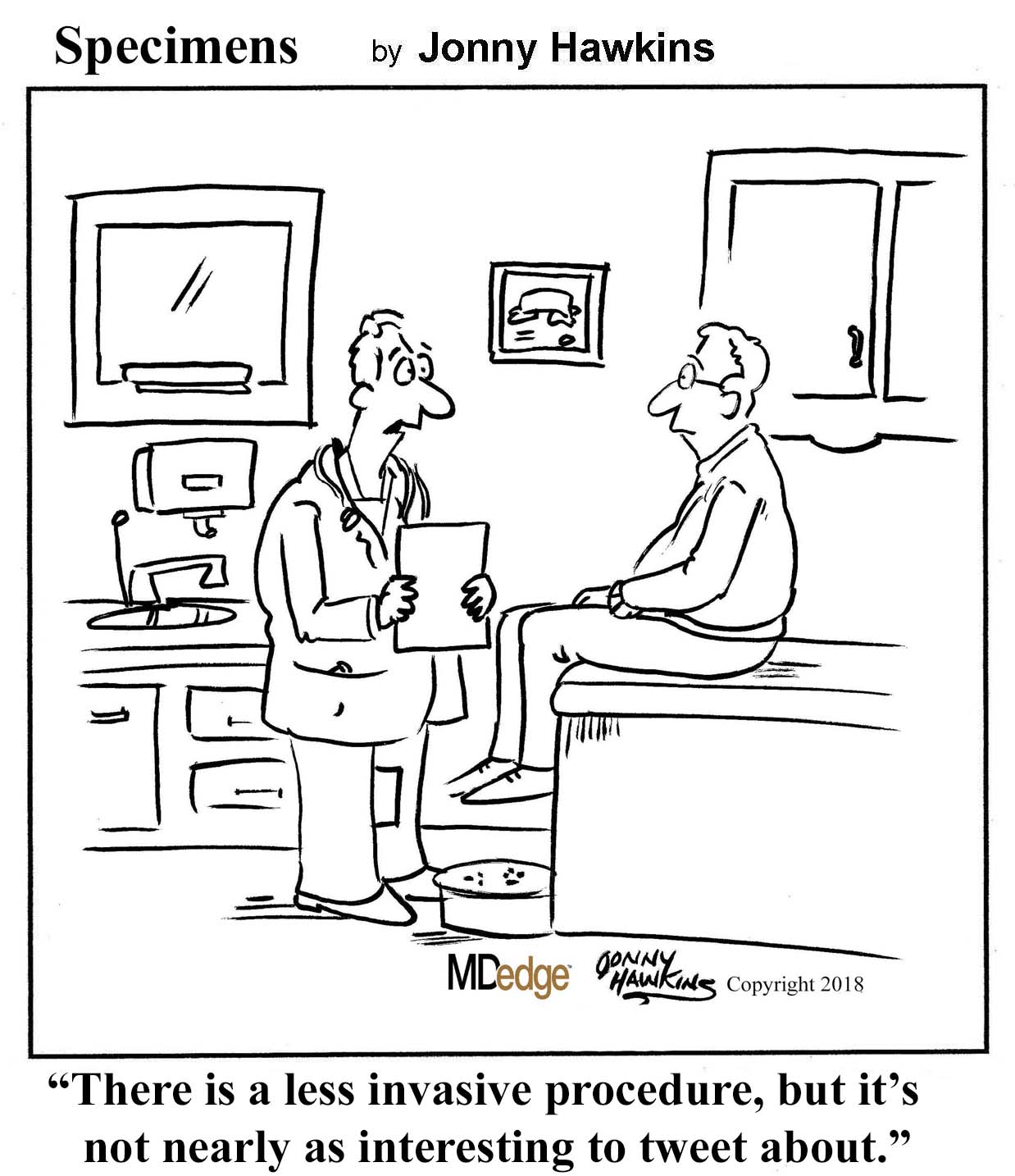
So you think you can pandemic?
What’s that? You say you’ve got an idea for the next great pandemic? Well, if your pandemic is going to beat coronavirus/COVID-19, it’s going to have to top this:
Sex: Porn star Lola Taylor (real name, Iyubov Bushueva) is currently in COVID-related isolation in Moscow and has offered to “have sex with the first scientist who finds a cure for coronavirus,” the Daily Star reported.
Sensible terrorists: “Islamic State has adopted a safety-first approach to the coronavirus pandemic and advised its members not to travel to Europe,” Politico reported. The terrorist group’s latest newsletter recommends that followers “stay away from the land of the epidemic” for the time being.
Drugs: Michigan is doing its part to keep the cannabis flowing. The state is temporarily lifting its ban against curbside pickup at marijuana stores as a way to limit exposure to coronavirus. “There has been an increase of customers who are stockpiling both medical and recreational cannabis, and sales are definitely up, just like other essentials,” Michigan Cannabis Industry Association Director Robin Schneider told mLive.com.
Sewage gridlock: Please don’t feed the fatbergs. That’s the message from the United Kingdom’s largest water and sewage authority. Thames Water is warning customers that flushing paper towels and wet wipes will add to the nonbiodegradable sewage blobs known as fatbergs, the Guardian reported. Thames Water’s position: “The only things that should be flushed are the 3 P’s: poo, pee and (toilet) paper,” the Guardian said.
Airship hospitals: China built two hospitals in response to the coronavirus epidemic, but can either of them fly? No. Science writer Bill Gourgey suggests that it’s time to revisit an idea proposed 100 years ago during a tuberculosis epidemic. Airships equipped as hospitals “could offer all of the resources – staff and equipment – to extract, quarantine, and treat patients. And a fleet could deliver at scale,” he wrote on OneZero.
The Governator: His royal Arnold-ness, along with this his pony Whiskey and donkey Lulu, has taken to Twitter to try to convince folks to stay inside and eat carrots together. Happily, Mr. Schwarzenegger did not go all Terminator when Whiskey tried to bite Lulu, instead offering a gentle, “You’ve got to get along.”
If your pandemic doesn’t have all of this, then you’re just not trying hard enough.
Earthworm Surprise
If you watched the Rugrats as a kid – or if your kids did, nonmillennials – you may remember how Phil and Lil used to eat bugs and worms whenever they played outside. We used to think it was gross, but now we think it may be time to follow their lead.
A Latvian scientist has unearthed (sorry) ways to make bread, muffins, lollipops, and so on using earthworms, claiming that earthworms are full of protein. Next time your children are crying for candy or sweets, why not hand them an earthworm lollipop to appease them? You’ll be making sure they’re getting their daily dose of protein!
The scientist, Ilga Gedrovica of the Latvian University of Life Science and Technologies, reported that earthworms not only contain just as much protein as meat, but they are also cheaper to produce. She also explained that, when dried, earthworms contain about three times more protein than meat.
Research is now underway to determine the safety of eating earthworms, fried or otherwise.
Just think: In a post–COVID-19 future, instead of a steak dinner, we could be making earthworm casseroles! Which, of course, kids won’t eat. Not because of the earthworms, of course. But because, ewwww, casseroles.
It’s ... Monty Python’s Flying Study!
It’s one of life’s most haunting questions, asked by one of our best philosophers: What is the velocity of an unladen swallow?
Sadly, Nathaniel Dominy and Erin Butler of Dartmouth University did not tackle this conundrum, but they did address another issue raised by Monty Python: Just how silly are the walks displayed by the Ministry of Silly Walks?
As you might expect, the minister himself is a masterclass of inefficiency, moving with 6.7 times more variability than someone walking in a nonhumorous fashion. Mr. Pudey, the man applying for the government grant to develop his own silly walk, is noticeably more efficient, merely displaying a rate of variability 3.3 times that of a normal walk. However, the researchers agreed with the minister that Mr. Pudey was well deserving of a government grant.
While we feel answering that question alone was worth a study, the researchers did have a larger point to make: comparing the bureaucratic inefficiency of the Ministry of Silly Walks to today’s peer-review process within the health field, particularly when researchers seek funding.
Grants take months to be approved and often involve researchers flying back and forth. A streamlined process could save huge amounts of both time and money, they noted.
The LOTME team would like to salute these two researchers for their excellent choice of metaphor, and hope they use Monty Python to make further points about health care. The swallow problem is just begging to be made into a metaphor.
So you think you can pandemic?
What’s that? You say you’ve got an idea for the next great pandemic? Well, if your pandemic is going to beat coronavirus/COVID-19, it’s going to have to top this:
Sex: Porn star Lola Taylor (real name, Iyubov Bushueva) is currently in COVID-related isolation in Moscow and has offered to “have sex with the first scientist who finds a cure for coronavirus,” the Daily Star reported.
Sensible terrorists: “Islamic State has adopted a safety-first approach to the coronavirus pandemic and advised its members not to travel to Europe,” Politico reported. The terrorist group’s latest newsletter recommends that followers “stay away from the land of the epidemic” for the time being.
Drugs: Michigan is doing its part to keep the cannabis flowing. The state is temporarily lifting its ban against curbside pickup at marijuana stores as a way to limit exposure to coronavirus. “There has been an increase of customers who are stockpiling both medical and recreational cannabis, and sales are definitely up, just like other essentials,” Michigan Cannabis Industry Association Director Robin Schneider told mLive.com.
Sewage gridlock: Please don’t feed the fatbergs. That’s the message from the United Kingdom’s largest water and sewage authority. Thames Water is warning customers that flushing paper towels and wet wipes will add to the nonbiodegradable sewage blobs known as fatbergs, the Guardian reported. Thames Water’s position: “The only things that should be flushed are the 3 P’s: poo, pee and (toilet) paper,” the Guardian said.
Airship hospitals: China built two hospitals in response to the coronavirus epidemic, but can either of them fly? No. Science writer Bill Gourgey suggests that it’s time to revisit an idea proposed 100 years ago during a tuberculosis epidemic. Airships equipped as hospitals “could offer all of the resources – staff and equipment – to extract, quarantine, and treat patients. And a fleet could deliver at scale,” he wrote on OneZero.
The Governator: His royal Arnold-ness, along with this his pony Whiskey and donkey Lulu, has taken to Twitter to try to convince folks to stay inside and eat carrots together. Happily, Mr. Schwarzenegger did not go all Terminator when Whiskey tried to bite Lulu, instead offering a gentle, “You’ve got to get along.”
If your pandemic doesn’t have all of this, then you’re just not trying hard enough.
Earthworm Surprise
If you watched the Rugrats as a kid – or if your kids did, nonmillennials – you may remember how Phil and Lil used to eat bugs and worms whenever they played outside. We used to think it was gross, but now we think it may be time to follow their lead.
A Latvian scientist has unearthed (sorry) ways to make bread, muffins, lollipops, and so on using earthworms, claiming that earthworms are full of protein. Next time your children are crying for candy or sweets, why not hand them an earthworm lollipop to appease them? You’ll be making sure they’re getting their daily dose of protein!
The scientist, Ilga Gedrovica of the Latvian University of Life Science and Technologies, reported that earthworms not only contain just as much protein as meat, but they are also cheaper to produce. She also explained that, when dried, earthworms contain about three times more protein than meat.
Research is now underway to determine the safety of eating earthworms, fried or otherwise.
Just think: In a post–COVID-19 future, instead of a steak dinner, we could be making earthworm casseroles! Which, of course, kids won’t eat. Not because of the earthworms, of course. But because, ewwww, casseroles.
It’s ... Monty Python’s Flying Study!
It’s one of life’s most haunting questions, asked by one of our best philosophers: What is the velocity of an unladen swallow?
Sadly, Nathaniel Dominy and Erin Butler of Dartmouth University did not tackle this conundrum, but they did address another issue raised by Monty Python: Just how silly are the walks displayed by the Ministry of Silly Walks?
As you might expect, the minister himself is a masterclass of inefficiency, moving with 6.7 times more variability than someone walking in a nonhumorous fashion. Mr. Pudey, the man applying for the government grant to develop his own silly walk, is noticeably more efficient, merely displaying a rate of variability 3.3 times that of a normal walk. However, the researchers agreed with the minister that Mr. Pudey was well deserving of a government grant.
While we feel answering that question alone was worth a study, the researchers did have a larger point to make: comparing the bureaucratic inefficiency of the Ministry of Silly Walks to today’s peer-review process within the health field, particularly when researchers seek funding.
Grants take months to be approved and often involve researchers flying back and forth. A streamlined process could save huge amounts of both time and money, they noted.
The LOTME team would like to salute these two researchers for their excellent choice of metaphor, and hope they use Monty Python to make further points about health care. The swallow problem is just begging to be made into a metaphor.
Australian apocalypse essentials and bacterial evolution stoppers
Irony 1, Council on Foreign Relations 0
It’s not a great time to be a business owner right now. People everywhere are feeling nervous, thanks to our old friend COVID-19, and it can be difficult to actually sell things when half the population is staying indoors hoarding toilet paper.
So if you are a business owner, you’re probably thinking: “Gee, it sure would be nice to meet up with my fellow business owners to come up with a plan on how to operate in a world dealing with a potential pandemic.” Right?
That’s the idea behind the Council on Foreign Relations’ roundtable discussion called “Doing Business Under Coronavirus,” scheduled for March 13, 2020, in New York. Or at least, it was the idea, because the conference has been canceled. And you’ll never guess why.
Okay, it was coronavirus. Uh, you probably did guess that. We’re not entirely sure what that means for business owners, but come on, there’s no need to worry, at least the infectious disease physicians had their meeting this past weekend ... oh wait. Hmm, maybe it’s time to start searching Amazon for some toilet paper.
Wipe away coronavirus fear
People now have smartphones to read the news while on the toilet, but at one point or another, having a newspaper to read in the john was probably pretty essential to combat boredom. Our friends down under, however, seem to have found another essential way to use a newspaper in the bathroom.
The coronavirus is slowly making its way around the world, and in Australia, people are stocking up on toilet paper. Toilet paper companies are working extra hard to keep a steady supply of toilet paper in supermarkets. A newspaper has tried to help by adding extra pages to its newspapers that could potentially be used as toilet paper. This seems like a good time to swap out your smartphone for one of these newspapers as it would not be wise to use your smartphone for toilet paper.
No one is sure why everyone in Australia is in a frenzy over toilet paper since it’s not a very big necessity in a large coronavirus outbreak. Are Aussies preparing to hide out in their homes just in case those affected by coronavirus turn into zombies, thus creating a zombie apocalypse? In that case, yeah, toilet paper, among other things, is probably essential.
Resistance meets resistance
As our planet moves from zombie apocalypse to coronapocalypse, even the business news has gone full COVID-19. So, it would be pointless for us to cover any other topic, right?
Well, welcome to the Bureau of Missing the Point. Ladies and gentleman, we give you [drum roll, please] bacteria.
That’s right, we said bacteria. In a world ruled by coronavirus, LOTME dares to bring you the latest edition of Bacteria vs. the World.
This week, we’re talking antibiotic resistance. The problem is that bacteria have the ability to pick up DNA from their surroundings to create resistance. That ability, known as competence, could be considered a form of evolution, and scientists are trying to stop it.
Investigators at the University of Groningen in the Netherlands and the Swiss University of Lausanne “developed a high-throughput assay to simultaneously test cells for competence and growth,” lead investigator Arnau Domenech, PhD, said in a written statement. Of the 1,366 approved drugs that they tested against Streptococcus pneumoniae, 46 blocked bacterial competence.
“When cells are under growth stress, for instance in the presence of antibiotics, they try to find a solution and become resistant to these drugs,” Dr. Domenech explained. “Importantly, we did not observe resistance to the drugs found here as they do not cause growth stress.”
The drug concentrations used to block competence may be too high to be safe for humans, but the results suggest that competence blockers are, indeed, anti-evolution drugs. As we go bacteria to the future, it seems, the ghost of Charles Darwin is working for the humans. Thanks, Chuck.
Oh, one more thing … CORONAVIRUS!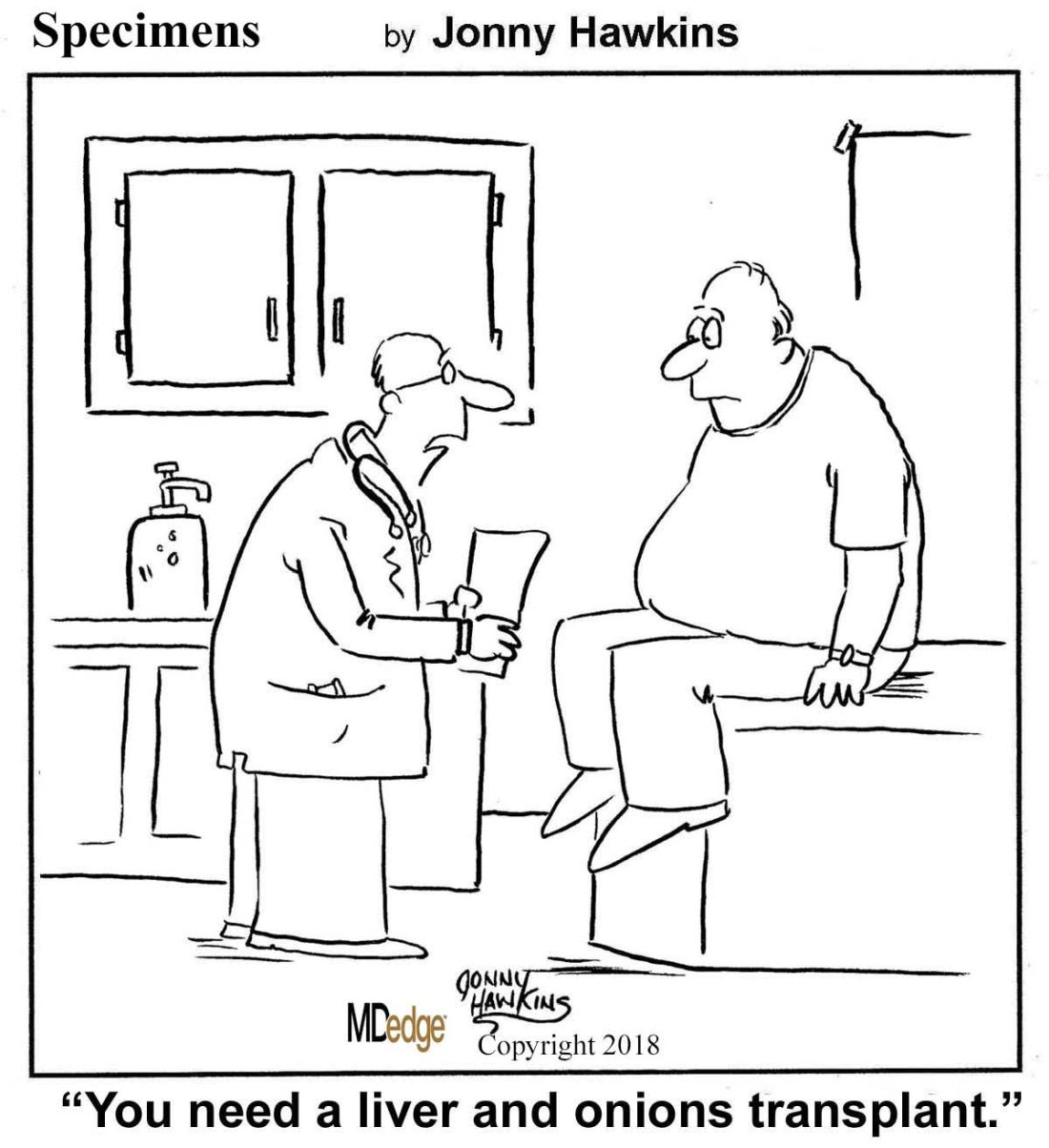
Irony 1, Council on Foreign Relations 0
It’s not a great time to be a business owner right now. People everywhere are feeling nervous, thanks to our old friend COVID-19, and it can be difficult to actually sell things when half the population is staying indoors hoarding toilet paper.
So if you are a business owner, you’re probably thinking: “Gee, it sure would be nice to meet up with my fellow business owners to come up with a plan on how to operate in a world dealing with a potential pandemic.” Right?
That’s the idea behind the Council on Foreign Relations’ roundtable discussion called “Doing Business Under Coronavirus,” scheduled for March 13, 2020, in New York. Or at least, it was the idea, because the conference has been canceled. And you’ll never guess why.
Okay, it was coronavirus. Uh, you probably did guess that. We’re not entirely sure what that means for business owners, but come on, there’s no need to worry, at least the infectious disease physicians had their meeting this past weekend ... oh wait. Hmm, maybe it’s time to start searching Amazon for some toilet paper.
Wipe away coronavirus fear
People now have smartphones to read the news while on the toilet, but at one point or another, having a newspaper to read in the john was probably pretty essential to combat boredom. Our friends down under, however, seem to have found another essential way to use a newspaper in the bathroom.
The coronavirus is slowly making its way around the world, and in Australia, people are stocking up on toilet paper. Toilet paper companies are working extra hard to keep a steady supply of toilet paper in supermarkets. A newspaper has tried to help by adding extra pages to its newspapers that could potentially be used as toilet paper. This seems like a good time to swap out your smartphone for one of these newspapers as it would not be wise to use your smartphone for toilet paper.
No one is sure why everyone in Australia is in a frenzy over toilet paper since it’s not a very big necessity in a large coronavirus outbreak. Are Aussies preparing to hide out in their homes just in case those affected by coronavirus turn into zombies, thus creating a zombie apocalypse? In that case, yeah, toilet paper, among other things, is probably essential.
Resistance meets resistance
As our planet moves from zombie apocalypse to coronapocalypse, even the business news has gone full COVID-19. So, it would be pointless for us to cover any other topic, right?
Well, welcome to the Bureau of Missing the Point. Ladies and gentleman, we give you [drum roll, please] bacteria.
That’s right, we said bacteria. In a world ruled by coronavirus, LOTME dares to bring you the latest edition of Bacteria vs. the World.
This week, we’re talking antibiotic resistance. The problem is that bacteria have the ability to pick up DNA from their surroundings to create resistance. That ability, known as competence, could be considered a form of evolution, and scientists are trying to stop it.
Investigators at the University of Groningen in the Netherlands and the Swiss University of Lausanne “developed a high-throughput assay to simultaneously test cells for competence and growth,” lead investigator Arnau Domenech, PhD, said in a written statement. Of the 1,366 approved drugs that they tested against Streptococcus pneumoniae, 46 blocked bacterial competence.
“When cells are under growth stress, for instance in the presence of antibiotics, they try to find a solution and become resistant to these drugs,” Dr. Domenech explained. “Importantly, we did not observe resistance to the drugs found here as they do not cause growth stress.”
The drug concentrations used to block competence may be too high to be safe for humans, but the results suggest that competence blockers are, indeed, anti-evolution drugs. As we go bacteria to the future, it seems, the ghost of Charles Darwin is working for the humans. Thanks, Chuck.
Oh, one more thing … CORONAVIRUS!
Irony 1, Council on Foreign Relations 0
It’s not a great time to be a business owner right now. People everywhere are feeling nervous, thanks to our old friend COVID-19, and it can be difficult to actually sell things when half the population is staying indoors hoarding toilet paper.
So if you are a business owner, you’re probably thinking: “Gee, it sure would be nice to meet up with my fellow business owners to come up with a plan on how to operate in a world dealing with a potential pandemic.” Right?
That’s the idea behind the Council on Foreign Relations’ roundtable discussion called “Doing Business Under Coronavirus,” scheduled for March 13, 2020, in New York. Or at least, it was the idea, because the conference has been canceled. And you’ll never guess why.
Okay, it was coronavirus. Uh, you probably did guess that. We’re not entirely sure what that means for business owners, but come on, there’s no need to worry, at least the infectious disease physicians had their meeting this past weekend ... oh wait. Hmm, maybe it’s time to start searching Amazon for some toilet paper.
Wipe away coronavirus fear
People now have smartphones to read the news while on the toilet, but at one point or another, having a newspaper to read in the john was probably pretty essential to combat boredom. Our friends down under, however, seem to have found another essential way to use a newspaper in the bathroom.
The coronavirus is slowly making its way around the world, and in Australia, people are stocking up on toilet paper. Toilet paper companies are working extra hard to keep a steady supply of toilet paper in supermarkets. A newspaper has tried to help by adding extra pages to its newspapers that could potentially be used as toilet paper. This seems like a good time to swap out your smartphone for one of these newspapers as it would not be wise to use your smartphone for toilet paper.
No one is sure why everyone in Australia is in a frenzy over toilet paper since it’s not a very big necessity in a large coronavirus outbreak. Are Aussies preparing to hide out in their homes just in case those affected by coronavirus turn into zombies, thus creating a zombie apocalypse? In that case, yeah, toilet paper, among other things, is probably essential.
Resistance meets resistance
As our planet moves from zombie apocalypse to coronapocalypse, even the business news has gone full COVID-19. So, it would be pointless for us to cover any other topic, right?
Well, welcome to the Bureau of Missing the Point. Ladies and gentleman, we give you [drum roll, please] bacteria.
That’s right, we said bacteria. In a world ruled by coronavirus, LOTME dares to bring you the latest edition of Bacteria vs. the World.
This week, we’re talking antibiotic resistance. The problem is that bacteria have the ability to pick up DNA from their surroundings to create resistance. That ability, known as competence, could be considered a form of evolution, and scientists are trying to stop it.
Investigators at the University of Groningen in the Netherlands and the Swiss University of Lausanne “developed a high-throughput assay to simultaneously test cells for competence and growth,” lead investigator Arnau Domenech, PhD, said in a written statement. Of the 1,366 approved drugs that they tested against Streptococcus pneumoniae, 46 blocked bacterial competence.
“When cells are under growth stress, for instance in the presence of antibiotics, they try to find a solution and become resistant to these drugs,” Dr. Domenech explained. “Importantly, we did not observe resistance to the drugs found here as they do not cause growth stress.”
The drug concentrations used to block competence may be too high to be safe for humans, but the results suggest that competence blockers are, indeed, anti-evolution drugs. As we go bacteria to the future, it seems, the ghost of Charles Darwin is working for the humans. Thanks, Chuck.
Oh, one more thing … CORONAVIRUS!
COVID-19’s hairy conspiracy, and a Kardashian Kolonoscopy
Coronavirus conspiracy gets hairy
It was inevitable, of course. The government’s response to COVID-19 and the novel coronavirus has become an issue, and the increased scrutiny has now turned up a conspiracy.
This particular plot, recently uncovered by the Twitterverse and reported by Newsweek, is being perpetuated by the CDC against the American patriots who make up the bearded wings of the Men-ocratic and Republi-man parties.
Our story begins on Nov. 2, 2017, when the National Institute for Occupational Safety and Health posted “To Beard or not to Beard? That’s a good Question!” on its science blog, which was aimed at “workers who wear tight-fitting respirators.” Like the N95 face mask. More than 2 years before the coronavirus was “discovered” in China. Hmmm, interesting.
The NIOSH post claimed that beards, sideburns, and some mustaches “will interfere with respirators that rely on a tight facepiece seal to achieve maximum protection.” The agency further alleged that “research tells us that the presence of facial hair under the sealing surface causes 20 to 1,000 times more leakage, compared to clean-shaven individuals.” As if research ever proved anything.
The post’s pièce de résistance, however, was an infograph illustrating 36 types of facial hairstyles and whether they worked with a face mask/respirator. Did you know that beard styles such as the chin curtain, French fork, Garibaldi, and Hulihee get a thumbs down? Did you know there are beard styles called the chin curtain, French fork, Garibaldi, and Hulihee? [What? No ZZ Top beard?]
Most mustaches are okay, though, and therein lies the proof of a conspiracy. Among the approved mustache styles is the toothbrush. You’ll find it on the bottom row of the graph, third from the left. Notice anything?
It’s a Hitler mustache! The CDC put its seal of approval on a Hitler mustache!
Thus, by the transfollicular property of the High Castle corollary to the Boys from Brazil theorem, a government conspiracy must exist.
The coronavirus will now proceed to take over the world. Have a nice day.
Keeping up with the Kolonoscopies
Imagine owing your life to the Kardashians. It’s a bit tough to swallow, but a man from Ohio owes Kim and her Krew a life debt.
Gary Paine was just passing the time, watching some daytime “Keeping Up With the Kardashians” television in the doctor’s waiting room while his wife was getting a colonoscopy. We’ve all been there – we in the Bureau of LOTME have watched more waiting-room “Judge Judy” than we care to admit.
And just like us, Gary said he was getting bored while watching the Kardashians’ TV travails. Although he felt relatively healthy, he decided to distract himself the best way he knew how: making his own colonoscopy appointment. Anything’s better than getting sucked into an 8-hour Kardashian marathon, right?
During Gary’s Kim K–inspired colonoscopy, it was discovered that he had an irregularity in his heart. Eventually, doctors found two severely blocked arteries. Paine underwent immediate, lifesaving quadruple-bypass surgery.
He now urges people to be aware that checkups are essential, whether you’re showing symptoms of poor health or not.
Which leads us to wonder: Do Kris Jenner and her clan know they’re now officially more painful than a colonoscopy appointment?
(Crosswalks) Don’t stop me now
There’s always that one guy. You’re stuck in a long line behind a big slow tractor trailer going 10 under the speed limit, and there’s a flashy BMW practically living inside your trunk. A brief passing zone approaches, but there’s no point ... oh, of course they swerve around and cut you off, what did they even gain from doing that?
Point is, people who drive expensive cars have a bit of a reputation for being less than courteous behind the wheel, and thanks to a study published in the Journal of Transport & Health, there’s some science to back that up.
A group of four presumably well-paid volunteers were sent out to crosswalks and crossed in front of cars to see how many would yield. Results were less than encouraging: Only 28% of 461 cars yielded. The only factor that significantly predicted whether or not a car would yield was how expensive it was; for every $1,000 increase in the value of the car, the driver was 3% less likely to stop.
It’s not looking good for owners of expensive cars, especially when even the study authors suggest that these drivers were displaying increased entitlement and narcissism through their lack of yielding behavior.
Our suggestion? Clearly rich people are sick and need intensive psychotherapy, and the offending vehicles should be removed and redistributed to the rest of us. We wouldn’t mind a nice slightly used Corvette, in red preferably. Nope, no ulterior motive here.
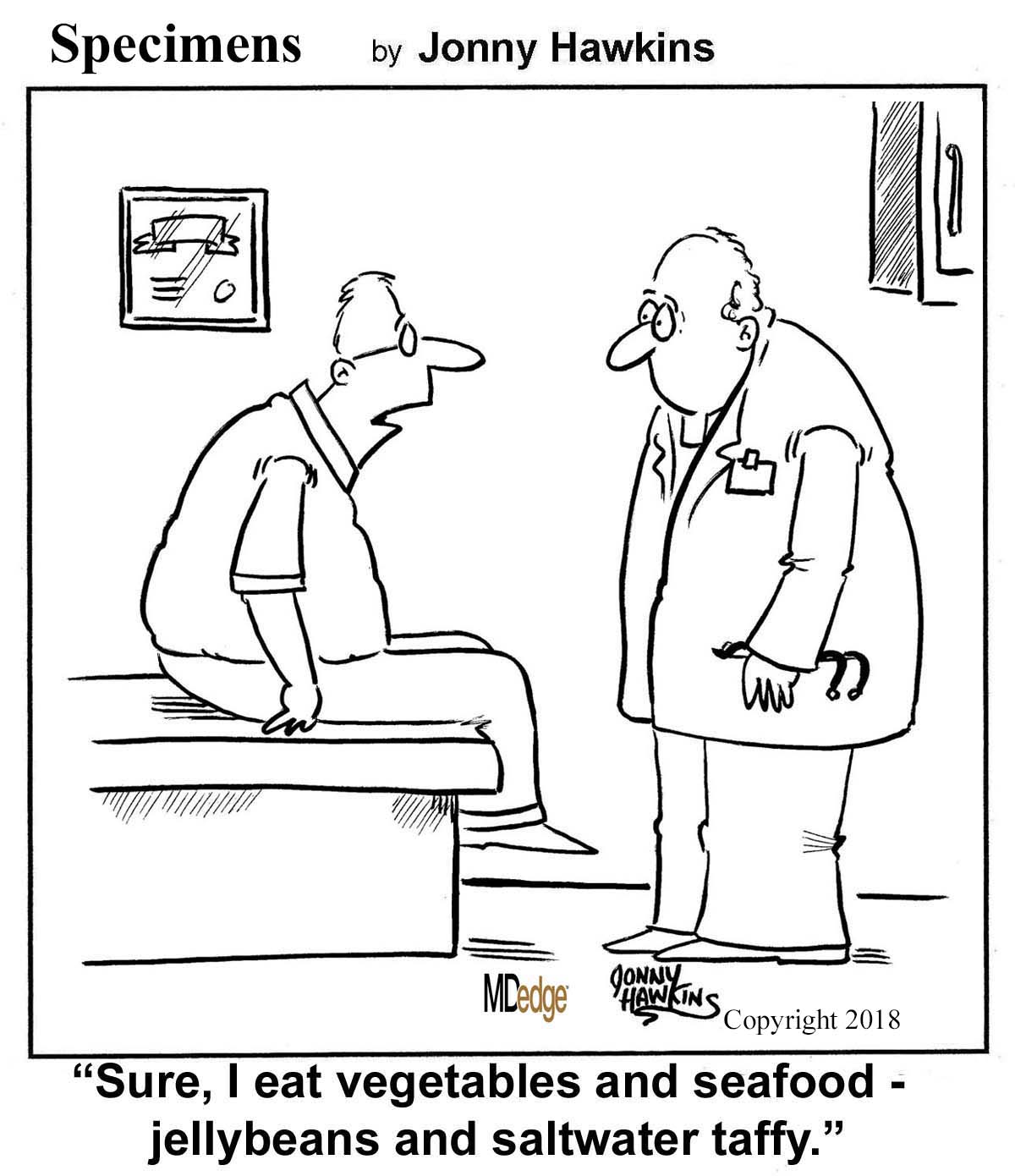
Coronavirus conspiracy gets hairy
It was inevitable, of course. The government’s response to COVID-19 and the novel coronavirus has become an issue, and the increased scrutiny has now turned up a conspiracy.
This particular plot, recently uncovered by the Twitterverse and reported by Newsweek, is being perpetuated by the CDC against the American patriots who make up the bearded wings of the Men-ocratic and Republi-man parties.
Our story begins on Nov. 2, 2017, when the National Institute for Occupational Safety and Health posted “To Beard or not to Beard? That’s a good Question!” on its science blog, which was aimed at “workers who wear tight-fitting respirators.” Like the N95 face mask. More than 2 years before the coronavirus was “discovered” in China. Hmmm, interesting.
The NIOSH post claimed that beards, sideburns, and some mustaches “will interfere with respirators that rely on a tight facepiece seal to achieve maximum protection.” The agency further alleged that “research tells us that the presence of facial hair under the sealing surface causes 20 to 1,000 times more leakage, compared to clean-shaven individuals.” As if research ever proved anything.
The post’s pièce de résistance, however, was an infograph illustrating 36 types of facial hairstyles and whether they worked with a face mask/respirator. Did you know that beard styles such as the chin curtain, French fork, Garibaldi, and Hulihee get a thumbs down? Did you know there are beard styles called the chin curtain, French fork, Garibaldi, and Hulihee? [What? No ZZ Top beard?]
Most mustaches are okay, though, and therein lies the proof of a conspiracy. Among the approved mustache styles is the toothbrush. You’ll find it on the bottom row of the graph, third from the left. Notice anything?
It’s a Hitler mustache! The CDC put its seal of approval on a Hitler mustache!
Thus, by the transfollicular property of the High Castle corollary to the Boys from Brazil theorem, a government conspiracy must exist.
The coronavirus will now proceed to take over the world. Have a nice day.
Keeping up with the Kolonoscopies
Imagine owing your life to the Kardashians. It’s a bit tough to swallow, but a man from Ohio owes Kim and her Krew a life debt.
Gary Paine was just passing the time, watching some daytime “Keeping Up With the Kardashians” television in the doctor’s waiting room while his wife was getting a colonoscopy. We’ve all been there – we in the Bureau of LOTME have watched more waiting-room “Judge Judy” than we care to admit.
And just like us, Gary said he was getting bored while watching the Kardashians’ TV travails. Although he felt relatively healthy, he decided to distract himself the best way he knew how: making his own colonoscopy appointment. Anything’s better than getting sucked into an 8-hour Kardashian marathon, right?
During Gary’s Kim K–inspired colonoscopy, it was discovered that he had an irregularity in his heart. Eventually, doctors found two severely blocked arteries. Paine underwent immediate, lifesaving quadruple-bypass surgery.
He now urges people to be aware that checkups are essential, whether you’re showing symptoms of poor health or not.
Which leads us to wonder: Do Kris Jenner and her clan know they’re now officially more painful than a colonoscopy appointment?
(Crosswalks) Don’t stop me now
There’s always that one guy. You’re stuck in a long line behind a big slow tractor trailer going 10 under the speed limit, and there’s a flashy BMW practically living inside your trunk. A brief passing zone approaches, but there’s no point ... oh, of course they swerve around and cut you off, what did they even gain from doing that?
Point is, people who drive expensive cars have a bit of a reputation for being less than courteous behind the wheel, and thanks to a study published in the Journal of Transport & Health, there’s some science to back that up.
A group of four presumably well-paid volunteers were sent out to crosswalks and crossed in front of cars to see how many would yield. Results were less than encouraging: Only 28% of 461 cars yielded. The only factor that significantly predicted whether or not a car would yield was how expensive it was; for every $1,000 increase in the value of the car, the driver was 3% less likely to stop.
It’s not looking good for owners of expensive cars, especially when even the study authors suggest that these drivers were displaying increased entitlement and narcissism through their lack of yielding behavior.
Our suggestion? Clearly rich people are sick and need intensive psychotherapy, and the offending vehicles should be removed and redistributed to the rest of us. We wouldn’t mind a nice slightly used Corvette, in red preferably. Nope, no ulterior motive here.

Coronavirus conspiracy gets hairy
It was inevitable, of course. The government’s response to COVID-19 and the novel coronavirus has become an issue, and the increased scrutiny has now turned up a conspiracy.
This particular plot, recently uncovered by the Twitterverse and reported by Newsweek, is being perpetuated by the CDC against the American patriots who make up the bearded wings of the Men-ocratic and Republi-man parties.
Our story begins on Nov. 2, 2017, when the National Institute for Occupational Safety and Health posted “To Beard or not to Beard? That’s a good Question!” on its science blog, which was aimed at “workers who wear tight-fitting respirators.” Like the N95 face mask. More than 2 years before the coronavirus was “discovered” in China. Hmmm, interesting.
The NIOSH post claimed that beards, sideburns, and some mustaches “will interfere with respirators that rely on a tight facepiece seal to achieve maximum protection.” The agency further alleged that “research tells us that the presence of facial hair under the sealing surface causes 20 to 1,000 times more leakage, compared to clean-shaven individuals.” As if research ever proved anything.
The post’s pièce de résistance, however, was an infograph illustrating 36 types of facial hairstyles and whether they worked with a face mask/respirator. Did you know that beard styles such as the chin curtain, French fork, Garibaldi, and Hulihee get a thumbs down? Did you know there are beard styles called the chin curtain, French fork, Garibaldi, and Hulihee? [What? No ZZ Top beard?]
Most mustaches are okay, though, and therein lies the proof of a conspiracy. Among the approved mustache styles is the toothbrush. You’ll find it on the bottom row of the graph, third from the left. Notice anything?
It’s a Hitler mustache! The CDC put its seal of approval on a Hitler mustache!
Thus, by the transfollicular property of the High Castle corollary to the Boys from Brazil theorem, a government conspiracy must exist.
The coronavirus will now proceed to take over the world. Have a nice day.
Keeping up with the Kolonoscopies
Imagine owing your life to the Kardashians. It’s a bit tough to swallow, but a man from Ohio owes Kim and her Krew a life debt.
Gary Paine was just passing the time, watching some daytime “Keeping Up With the Kardashians” television in the doctor’s waiting room while his wife was getting a colonoscopy. We’ve all been there – we in the Bureau of LOTME have watched more waiting-room “Judge Judy” than we care to admit.
And just like us, Gary said he was getting bored while watching the Kardashians’ TV travails. Although he felt relatively healthy, he decided to distract himself the best way he knew how: making his own colonoscopy appointment. Anything’s better than getting sucked into an 8-hour Kardashian marathon, right?
During Gary’s Kim K–inspired colonoscopy, it was discovered that he had an irregularity in his heart. Eventually, doctors found two severely blocked arteries. Paine underwent immediate, lifesaving quadruple-bypass surgery.
He now urges people to be aware that checkups are essential, whether you’re showing symptoms of poor health or not.
Which leads us to wonder: Do Kris Jenner and her clan know they’re now officially more painful than a colonoscopy appointment?
(Crosswalks) Don’t stop me now
There’s always that one guy. You’re stuck in a long line behind a big slow tractor trailer going 10 under the speed limit, and there’s a flashy BMW practically living inside your trunk. A brief passing zone approaches, but there’s no point ... oh, of course they swerve around and cut you off, what did they even gain from doing that?
Point is, people who drive expensive cars have a bit of a reputation for being less than courteous behind the wheel, and thanks to a study published in the Journal of Transport & Health, there’s some science to back that up.
A group of four presumably well-paid volunteers were sent out to crosswalks and crossed in front of cars to see how many would yield. Results were less than encouraging: Only 28% of 461 cars yielded. The only factor that significantly predicted whether or not a car would yield was how expensive it was; for every $1,000 increase in the value of the car, the driver was 3% less likely to stop.
It’s not looking good for owners of expensive cars, especially when even the study authors suggest that these drivers were displaying increased entitlement and narcissism through their lack of yielding behavior.
Our suggestion? Clearly rich people are sick and need intensive psychotherapy, and the offending vehicles should be removed and redistributed to the rest of us. We wouldn’t mind a nice slightly used Corvette, in red preferably. Nope, no ulterior motive here.

A bladder brewery and a neurosurgical violin solo
One bikram, one shakti, one beer
Novelty yoga is a thing, and there’s no stopping it now.
There’s cat yoga, aerial yoga (performed in a harness or hammock suspended above the ground), karaoke yoga, laughter yoga (done while listening to the LOTME podcast, no doubt), snake yoga, toega (yoga for toes), and, of course, goat yoga. So what’s next, beer yoga?
Why, yes, it is beer yoga.
In our travels around the dark, deserted corners of the Internet, we came across an article on Educatedbox.com that said a beer yoga class “involves picking up a beer, drinking it, and putting it back down again, in many different ways.”
Pretty straightforward. Then we saw a photo on Germany’s Bieryoga.de that showed all of the participants doing the tree pose while balancing a beer bottle on their heads. Not so straightforward. Trust us, we tried.
Bieryoga explains that “the exuberance that comes with drinking beer and the body awareness of yoga can be combined into an energizing experience. In the beer and now.”
How can we say no to “in the beer and now”? Well, we can’t, but we do have one teeny tiny problem: We’ve gotten into “downward-facing dog with IPA on rump,” and now we can’t get up.
Little help … anyone?
A surgical symphony
A patient playing the violin during her own brain surgery? That sounds way more interesting than paying hundreds of dollars to attend any old normal concert.
Violinist Dagmar Turner found out in 2013 that she had a brain tumor that was gradually advancing in size. After learning the tumor needed to be removed, Ms. Turner worried she might lose her talents if the parts of her brain crucial to playing the violin were destroyed.
Luckily, her well-orchestrated surgical team composed a plan to ensure they spared the vital parts of the brain used when playing the violin: They would wake their patient during brain surgery and have her play her violin. Yes, you read that right – she played the violin during surgery to help her surgeons make certain there was no damage to the violin-related areas of her brain.
Personally, we here at the profit-minded Bureau of LOTME believe the surgical team missed a perfect opportunity to sell tickets to this event. Ms. Turner successfully made it through the surgery both 90% tumor free and fully able to play her violin. We love a happy ending! Bravo! Though maybe not “Encore!”
Belly up to the bar, boys
Quick, what would be the worst superpower? No doubt your head is flooding with ideas, each more comical than the last. But did you think of “able to pee beer?”
That’s right, it’s the return of an old LOTME favorite – auto-brewery syndrome. But this time, there’s a twist.
Our daring hero in today’s exciting case report from Annals of Internal Medicine is a 61-year-old woman from Pittsburgh who presented with liver damage and poorly controlled diabetes, and who sought placement on the liver transplant list.
But hang on, the woman’s history seemed to indicate her liver problems stemmed from alcohol addiction, because her urine tests were always positive for alcohol, and the current tests said the same. Hmm, this is sounding slightly villainous!
There were, however, some discrepancies. The woman didn’t appear to be intoxicated during clinic visits, tests for ethanol metabolites were negative while urine tests for ethanol were positive, and there were large quantities of glucose and budding yeast in the urine. Something strange was going on, so the doctors decided to dig deeper.
The yeast in question was Candida glabrata, which is closely related to brewer’s yeast. The doctors found high levels of ethanol production in the urine, suggesting that the yeast was fermenting sugar inside the bladder. The patient was quite literally urinating alcohol, becoming the first documented case in a living person of what the doctors dubbed “urinary auto-brewery syndrome.”
As much as we love a good drink here at LOTME world headquarters, we’ll have to pass on the urine cocktail. Just don’t tell all the beer yoga enthusiasts, this seems right up their alley. You know, positive natural energy flow or something like that.
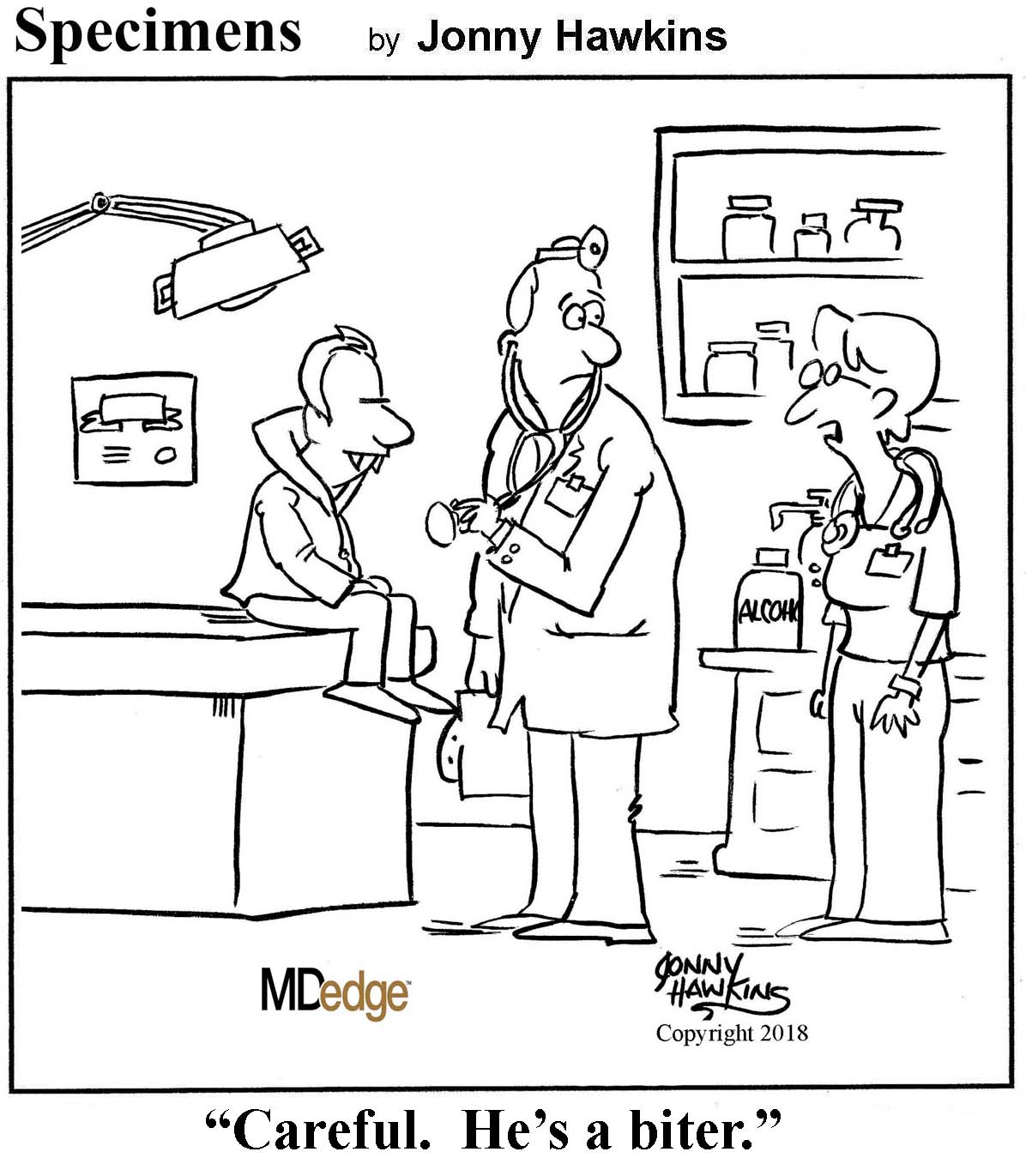
One bikram, one shakti, one beer
Novelty yoga is a thing, and there’s no stopping it now.
There’s cat yoga, aerial yoga (performed in a harness or hammock suspended above the ground), karaoke yoga, laughter yoga (done while listening to the LOTME podcast, no doubt), snake yoga, toega (yoga for toes), and, of course, goat yoga. So what’s next, beer yoga?
Why, yes, it is beer yoga.
In our travels around the dark, deserted corners of the Internet, we came across an article on Educatedbox.com that said a beer yoga class “involves picking up a beer, drinking it, and putting it back down again, in many different ways.”
Pretty straightforward. Then we saw a photo on Germany’s Bieryoga.de that showed all of the participants doing the tree pose while balancing a beer bottle on their heads. Not so straightforward. Trust us, we tried.
Bieryoga explains that “the exuberance that comes with drinking beer and the body awareness of yoga can be combined into an energizing experience. In the beer and now.”
How can we say no to “in the beer and now”? Well, we can’t, but we do have one teeny tiny problem: We’ve gotten into “downward-facing dog with IPA on rump,” and now we can’t get up.
Little help … anyone?
A surgical symphony
A patient playing the violin during her own brain surgery? That sounds way more interesting than paying hundreds of dollars to attend any old normal concert.
Violinist Dagmar Turner found out in 2013 that she had a brain tumor that was gradually advancing in size. After learning the tumor needed to be removed, Ms. Turner worried she might lose her talents if the parts of her brain crucial to playing the violin were destroyed.
Luckily, her well-orchestrated surgical team composed a plan to ensure they spared the vital parts of the brain used when playing the violin: They would wake their patient during brain surgery and have her play her violin. Yes, you read that right – she played the violin during surgery to help her surgeons make certain there was no damage to the violin-related areas of her brain.
Personally, we here at the profit-minded Bureau of LOTME believe the surgical team missed a perfect opportunity to sell tickets to this event. Ms. Turner successfully made it through the surgery both 90% tumor free and fully able to play her violin. We love a happy ending! Bravo! Though maybe not “Encore!”
Belly up to the bar, boys
Quick, what would be the worst superpower? No doubt your head is flooding with ideas, each more comical than the last. But did you think of “able to pee beer?”
That’s right, it’s the return of an old LOTME favorite – auto-brewery syndrome. But this time, there’s a twist.
Our daring hero in today’s exciting case report from Annals of Internal Medicine is a 61-year-old woman from Pittsburgh who presented with liver damage and poorly controlled diabetes, and who sought placement on the liver transplant list.
But hang on, the woman’s history seemed to indicate her liver problems stemmed from alcohol addiction, because her urine tests were always positive for alcohol, and the current tests said the same. Hmm, this is sounding slightly villainous!
There were, however, some discrepancies. The woman didn’t appear to be intoxicated during clinic visits, tests for ethanol metabolites were negative while urine tests for ethanol were positive, and there were large quantities of glucose and budding yeast in the urine. Something strange was going on, so the doctors decided to dig deeper.
The yeast in question was Candida glabrata, which is closely related to brewer’s yeast. The doctors found high levels of ethanol production in the urine, suggesting that the yeast was fermenting sugar inside the bladder. The patient was quite literally urinating alcohol, becoming the first documented case in a living person of what the doctors dubbed “urinary auto-brewery syndrome.”
As much as we love a good drink here at LOTME world headquarters, we’ll have to pass on the urine cocktail. Just don’t tell all the beer yoga enthusiasts, this seems right up their alley. You know, positive natural energy flow or something like that.

One bikram, one shakti, one beer
Novelty yoga is a thing, and there’s no stopping it now.
There’s cat yoga, aerial yoga (performed in a harness or hammock suspended above the ground), karaoke yoga, laughter yoga (done while listening to the LOTME podcast, no doubt), snake yoga, toega (yoga for toes), and, of course, goat yoga. So what’s next, beer yoga?
Why, yes, it is beer yoga.
In our travels around the dark, deserted corners of the Internet, we came across an article on Educatedbox.com that said a beer yoga class “involves picking up a beer, drinking it, and putting it back down again, in many different ways.”
Pretty straightforward. Then we saw a photo on Germany’s Bieryoga.de that showed all of the participants doing the tree pose while balancing a beer bottle on their heads. Not so straightforward. Trust us, we tried.
Bieryoga explains that “the exuberance that comes with drinking beer and the body awareness of yoga can be combined into an energizing experience. In the beer and now.”
How can we say no to “in the beer and now”? Well, we can’t, but we do have one teeny tiny problem: We’ve gotten into “downward-facing dog with IPA on rump,” and now we can’t get up.
Little help … anyone?
A surgical symphony
A patient playing the violin during her own brain surgery? That sounds way more interesting than paying hundreds of dollars to attend any old normal concert.
Violinist Dagmar Turner found out in 2013 that she had a brain tumor that was gradually advancing in size. After learning the tumor needed to be removed, Ms. Turner worried she might lose her talents if the parts of her brain crucial to playing the violin were destroyed.
Luckily, her well-orchestrated surgical team composed a plan to ensure they spared the vital parts of the brain used when playing the violin: They would wake their patient during brain surgery and have her play her violin. Yes, you read that right – she played the violin during surgery to help her surgeons make certain there was no damage to the violin-related areas of her brain.
Personally, we here at the profit-minded Bureau of LOTME believe the surgical team missed a perfect opportunity to sell tickets to this event. Ms. Turner successfully made it through the surgery both 90% tumor free and fully able to play her violin. We love a happy ending! Bravo! Though maybe not “Encore!”
Belly up to the bar, boys
Quick, what would be the worst superpower? No doubt your head is flooding with ideas, each more comical than the last. But did you think of “able to pee beer?”
That’s right, it’s the return of an old LOTME favorite – auto-brewery syndrome. But this time, there’s a twist.
Our daring hero in today’s exciting case report from Annals of Internal Medicine is a 61-year-old woman from Pittsburgh who presented with liver damage and poorly controlled diabetes, and who sought placement on the liver transplant list.
But hang on, the woman’s history seemed to indicate her liver problems stemmed from alcohol addiction, because her urine tests were always positive for alcohol, and the current tests said the same. Hmm, this is sounding slightly villainous!
There were, however, some discrepancies. The woman didn’t appear to be intoxicated during clinic visits, tests for ethanol metabolites were negative while urine tests for ethanol were positive, and there were large quantities of glucose and budding yeast in the urine. Something strange was going on, so the doctors decided to dig deeper.
The yeast in question was Candida glabrata, which is closely related to brewer’s yeast. The doctors found high levels of ethanol production in the urine, suggesting that the yeast was fermenting sugar inside the bladder. The patient was quite literally urinating alcohol, becoming the first documented case in a living person of what the doctors dubbed “urinary auto-brewery syndrome.”
As much as we love a good drink here at LOTME world headquarters, we’ll have to pass on the urine cocktail. Just don’t tell all the beer yoga enthusiasts, this seems right up their alley. You know, positive natural energy flow or something like that.

